
How does one [company] makes a great product better? How do you improve upon something that has already been so well executed? Can you fix what isn’t broken?
There is a famous quote by J. Paul Getty: “True innovation is coming up with a product that the customer didn’t even know they needed. “
Ecotech Marine’s success is based on its team’s ability to come up with products for both types of reefkeeping aficionados- the number crunching, technically oriented aquarists that rely on data when shopping for equipment, as well as those who only care about the outcome, which in this review’s case is “How good is it for growing corals?”
I belong to the latter group. Sure, I like to read every review I can on a given product and compare its specs with similar products manufactured by different companies, but at the end of the day, the deciding factor for me will always be a recommendation from someone who has long-term success in keeping reef animals. I have been in the hobby long enough to know that there are people out there that do things better than me, their experience being rewarded with beautiful, well maintained reef tanks, where corals and fish thrive. These are the people I turn to for advice, and whose actions I mimic to help improve my own aquarium.
The Ecotech radion often comes up in conversations with experienced reefers. Not surprisingly- through three generations of LED panels, this sleek aquarium light wrapped in a shiny, black case has managed to dissolve the skepticism surrounding LEDs’ ability to grow photosynthetic animals. “Can they really grow corals?” Yes, they can.
PART I
ECOTECH RADION EXPERIENCE
FISH TANK PORN
I reached out to some of the “celebrities” of the reefing world and got permission to post full tank shots of their aquariums, all lit exclusively by Ecotech radion lights. All of them own impressively large marine aquariums dominated by the “cream of the crop” SPS corals and all are using Radions exclusively to light their tanks. Knowing how hard is to achieve the perfect lighting balance required to maintain an SPS-dominated reef tank, I consider their success to be a serious endorsement for the lights. What better evidence does one need than positive feedback from reefing masters? Still unconvinced? Let the pictures do the talking.

Randy Donowitz 240 gallon reef tank lit by 6 Ecotech Radion fixtures- 2 centrally located Gen 4 XR30w Pro lights bordered by 2 Gen2 XR30w Pro lights with wide angle TIR lenses

Richard Ross 16 years old 150 gallon reef aquarium, lit by 3 Ecotech Radion Gen 4 XR30w Pro fixtures
INTRODUCTION PROPER
I understand that there might be a certain bias towards Ecotech product felt in the foreword to this review, but I wouldn’t be here introducing the 4th generation of radion if it wasn’t for the success of the previous iterations of this proven aquarium lighting workhorse. Personally, I’ve never owned a radion. I’ve played with a variety of aquarium-specific LED panels, from a DIY Cree mixup to the latest Wi-FI controlled devices, but the radion always remained beyond my reach. For that reason, I am going to approach this review from the perspective of a person unfamiliar with Ecotech’s programming platform; if you’ve had more experience than me, you may want to skim through some parts of this article.
ECOTECH RADION IN ESSENCE
Ecotech changed the LED market when it released the first generation radion – a characteristic, sleek design, the use of premium materials and most importantly, the impressive hardware behind it, made long-time aquarists look at LED lights more seriously. Through every next iteration of radion, Ecotech integrated new, more advanced technology, offering the latest in LED chips and lens design, while the outside remained largely unchanged. They also built a reputation as a company that stands behind their product, offering the excellent customer service consumers expect after purchasing a premium product. And while radion is an expensive product, truly “you get what you pay for”; this is a light that delivers on its promises and keeps going strong through years of use.
Another factor in radion’s success is its upgradability. Instead of sealing up all the parts in an impenetrable case plastered with “warranty void if removed” stickers, the Ecotech team decided to release upgrade kits alongside every new radion generation. Hardware updates were designed to fit into the same outer shell, and utilize the same radiator & fan cooling capabilities, which meant aquarists could upgrade from previous generation at a fraction of the cost of a new light. The 4th generation of EcoTech radion is different in that aspect. In an interview with Reefs.com correspondent Randy Donowitz, Tim Marks, Ecotech Marine President, explained in detail the reason behind Gen 4 not being upgradable from earlier versions. I will get to that later, but please take a look at the interview, Tim talks at length about what went into the development process of the long-awaited upgrade to the radion line.
SUBTLE CHANGES, DRAMATIC OUTCOME
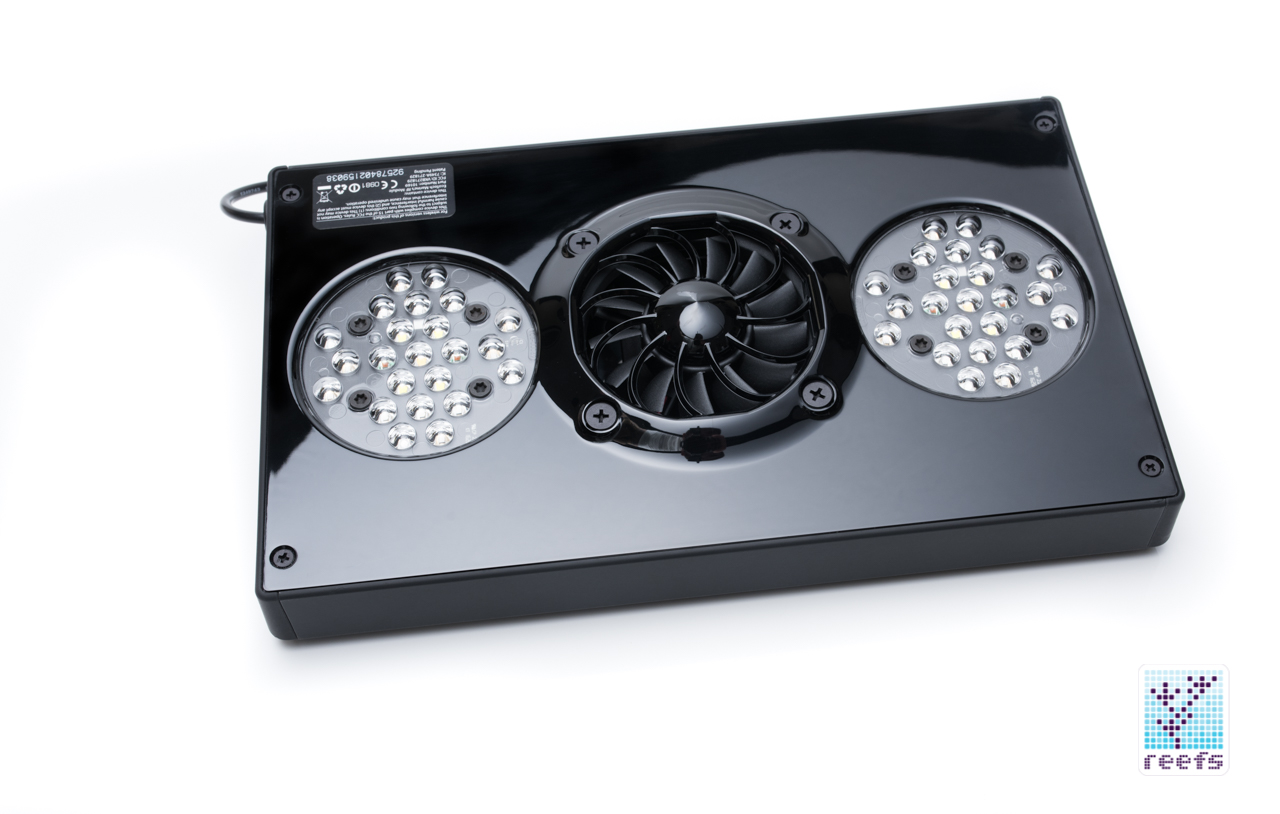
radion’s ability to grow corals and present them in all their glory as well as the best metal halides and T5 fluorescent bulbs changed the way people thought about LED use in aquariums. Their LED emitters produced high values in the photosynthetically active radiation (PAR) range of the light spectrum; it had been the uneven PAR distribution and inadequate color mixing that kept LED systems from being successful before then. You see, a light emitting diode (LED) is a single frequency light source that’s also a highly directional one, which means that a single LED can only produce light in a specific wavelength (even white LEDs are color emitters coated in a layer of phosphor material that emits white light when illuminated) and the light has a very narrow distribution, or spread. To correct the inadequate color mixing issue – the “disco effect” – LEDs in a cluster are packed tightly together and arranged in a fashion that allows for the blending of individual colors. Poor distribution is corrected using optic lenses, which help redirect light photons over a larger area. The gold standard for optics design is a concave-shaped lens that spreads light in a conical pattern, but that shape creates another problem, as PAR values drop significantly as you move farther from the center of the LED cluster. These so-called “dead spots” where PAR value is inadequate for some light loving corals, can force aquarists to base coral placement in their tanks on the light distribution, which can clash with the tank’s design or aesthetics, and may be a reason some people dislike LEDs in general.
Ecotech engineers wanted to fix this problem, and that was the driving factor in the radion Gen 4 development process. It took three years, longer than any previous generation’s life cycle, for the new radion to be manufactured and the result is a fundamentally changed light that, on the surface, seems only subtly face-lifted. But in the center of this new light lays completely redesign optics called Hemispherical Edge Illumination Optics, or HEI.
HEI optics have a sophisticated, hemispherical shape that redirects light photons emitted by the diodes in an entirely new way. The dome-shaped light spread vastly improves PAR distribution compared to the last generation’s TIR optics. Just looking at the PAR redistribution chart posted by EcoTech gives us a general idea of the improvement HEI optics bring:
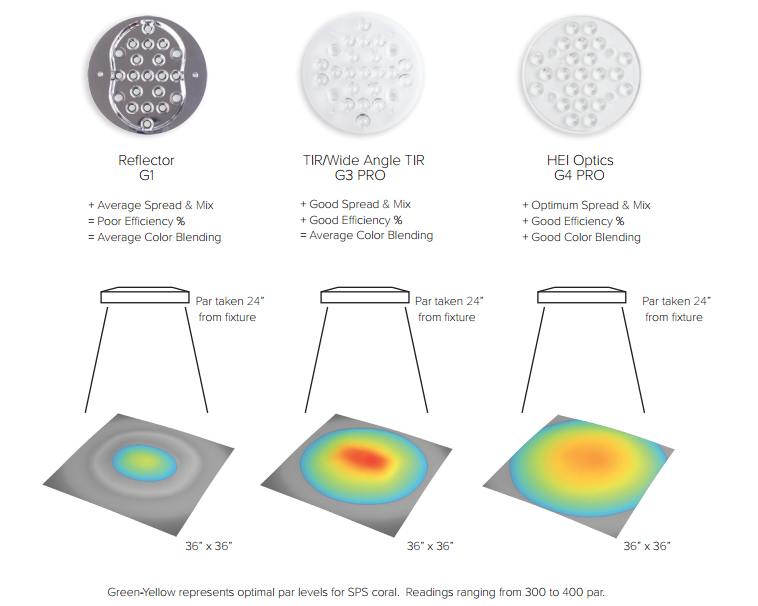
Gen 4 radion equipped with HEI optics covers a much larger area than the Gen 3 with TIR, it also “blends” the areas of higher and lower PAR values seamlessly, eliminating sudden PAR value drops as we move away from the center of the LEDs array. Gone as well are hot spots with extremely high PAR values, where some corals may be burned from too much light energy.
HEI CHANGES EVERYTHING
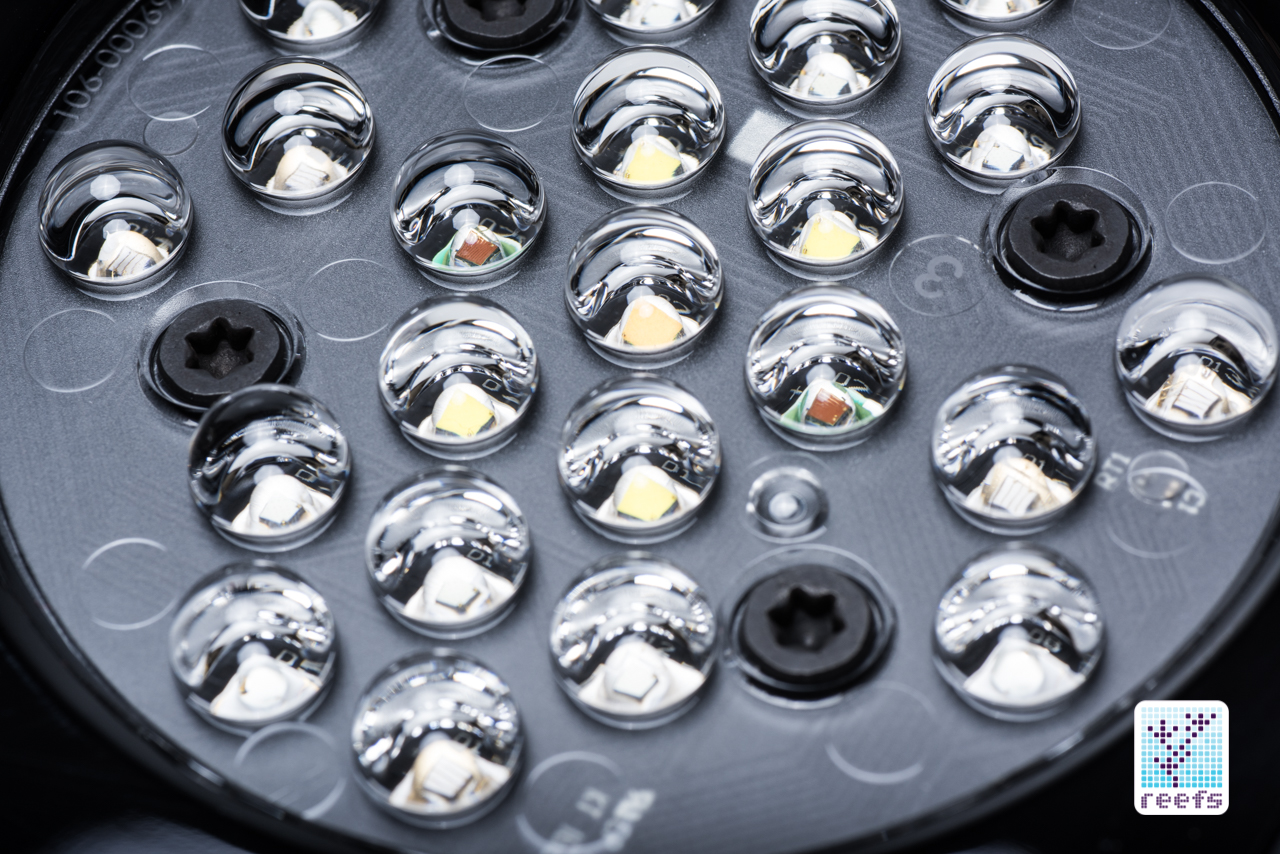
Unfortunately, HEI optics does have one drawback: they must be very close to the light source to properly function. Anyone familiar with photographic lenses knows that the hemispherical lens is designed to redirect wide spread light waves produced by the LED emitter into an organized, dome shaped pattern. However, if you move the hemispherical lens too far away from the light source, the dome “breaks” and some light waves are dispersed at an extremely wide angle, making them unusable for illuminating objects below.
For Gen 4 radion’s new HEI optics to work, the whole LED array had to be shifted down with the optics (you can see in the picture below how the lens domes are sticking out from the light’s bottom cover)
To accommodate the new optics, the heatsink, the driver, and the LED array cluster had to be redesigned. Ultimately, that means no more upgrades from the previous generations of radion. Ecotech received a lot of criticism for that move, particularly from people who saw upgradeability as radion’s most important feature.
Tim Marks responded to the critics; he said they had a tough decision to make, and the only reason they decided to divert from the upgradability road was because it hindered progress- there was simply no way of utilizing the existing body to house new electronics. Because of HEI changes and the redesigned LED cluster, almost everything else in the light has changed. There is a new LED driver inside Gen 4, as well as a new power supply, and LED clusters and lenses shifting down towards the bottom cover made space for a new, taller heatsink that dominates the space inside radion. Ecotech was able to implement the latest technology in passive cooling and the new heatsink features microfins in a zig-zag pattern,which have much more surface area for dissipating heat. They not only look cool, but are also much more efficient, which in return means that the centrally-located fan used for cooling the heatsink can now work effectively at a slower rpm. The light stays cooler and the fan makes less noise.
LED ARRAY
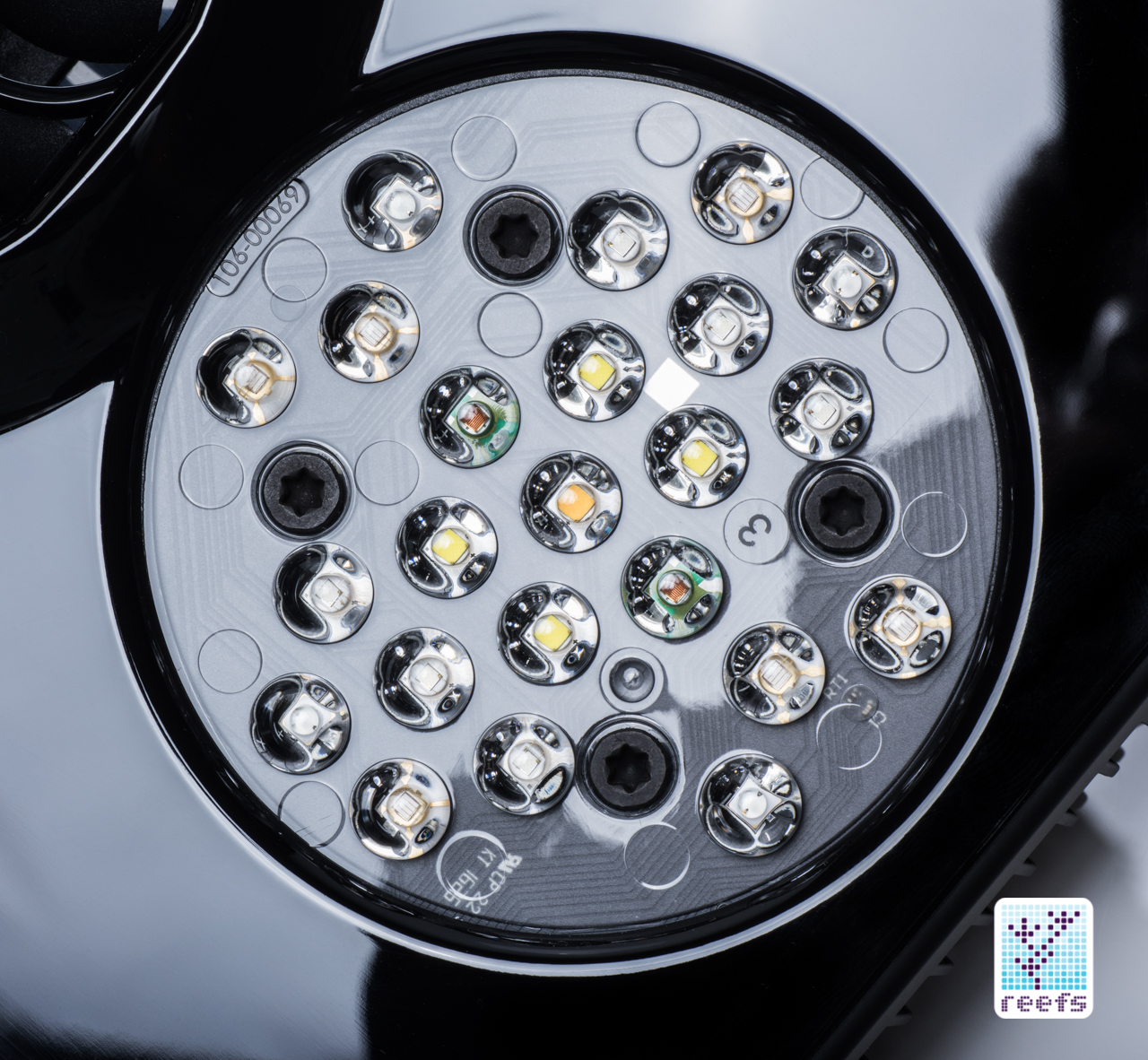
HEI lenses are not the only significant improvement in Generation 4. Ecotech also played around with LED colors, looking for ways to improve the spectrum and make the light appear brighter to the human eye. The result is a new LED cluster with 46 LEDs arranged into 8 independent control channels, 2 more than the previous radion Pro. The base version has 34 LEDs and the same HEI lenses as the pro fixture. As far as individual emitters, radion XR30w Pro G4 includes:
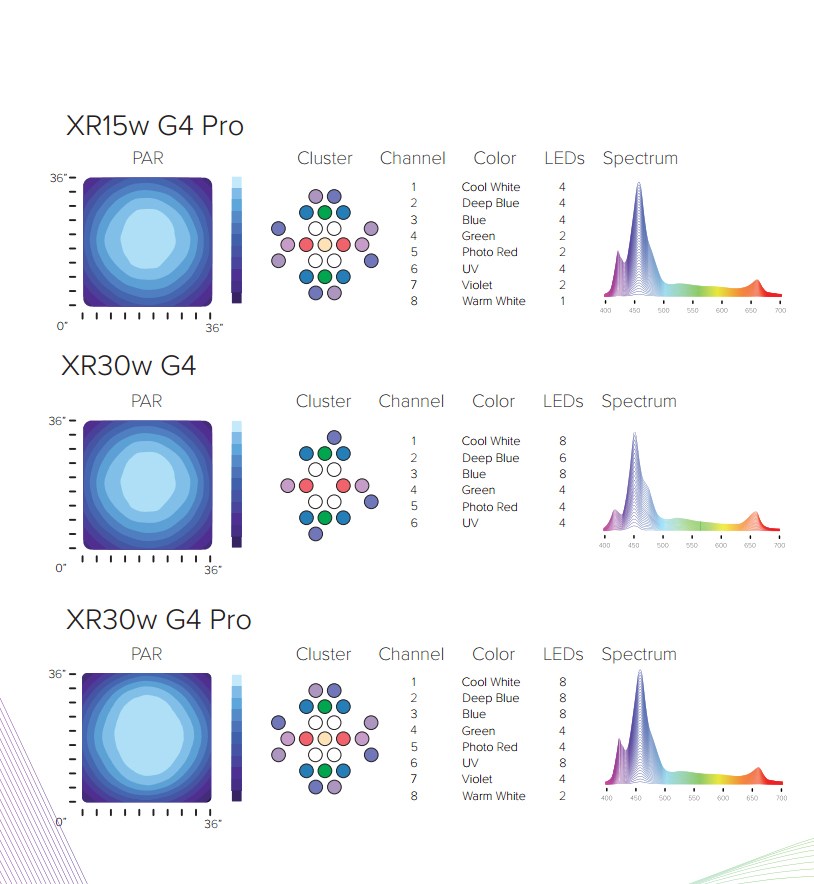
Compared to the Gen3 radion Pro, Gen4 replaces yellow LEDs with Warm White and introduces a new 430nm violet channel consisting of 4 emitters, giving the new radion light spectrum a subtle but significant upgrade. Warm white LEDs are known for being bright and natural looking to the human eye, they also offer a better spectrum coverage compared to single-color emitters. And the 430nm violet LED chip provides a “missing link” in the violet-blue side of the light spectrum, which the zooxanthellae in corals’ tissue use to photosynthesize.There is a smooth, gradual intensity boost at the 430nm mark, thanks to the new violet LEDs, as well as a higher intensity in the 470 nm-480 nm range and an intensity increase at 660nm, compared to the G3 radion XR30w.
According to the zooxanthellae light adsorption studies done by Dmitry Karpenko and Vahe Ganapetyan, the algae use of light spectrum is most significant in the 400 to 480nm wavelengths, with peak adsorption at 430nm. Gen 4 radion now covers almost the entire spectrum of light that corals need to thrive, with excellent output at both the earlier mentioned range, as well as the 660-670nm wavelengths, produced by the combination of white diodes and photo red emitters present in the cluster
FULL SPECS

From the outside, the new radion looks similar to Gen 3, but there are two obvious changes- first, the new heatsink blends seamlessly into the body in a sleek, matte black finish, contrasting with the high gloss acrylic of the upper and lower covers. And second, it is significantly taller than the previous generation radion, with more open slots for air circulation, making it easier for the fan to cool the LEDs. Speaking of LEDs, the new HEI optics look nothing like TIR lenses- they’re perfectly polished half ovals residing over the emitters’ primary lenses, and for the first time, protrude slightly from the bottom cover.
Below is a comparison between gen 3 radion XR30w Pro with wide angle TIR lenses vs Gen 4 radion XR30w Pro:
Gen 3 radion XR30w Pro WTIR | Gen 4 Radion XR30w Pro | |
Number of LEDs | 42 | 46 |
| Max Wattage | 170 | 190 |
| Channels of control | 6 | 8 |
| LED colors | Green, Blue, Deep Blue, Hyper Red, White, Indigo, Yellow, Violet | Cool White, Deep Blue, Blue, Green, Photo Red, UV, Violet, Warm White |
With the addition of 4 extra emitters,the Gen4 radion XR30w Pro is the most powerful light Ecotech has produced to date. It has an output of 190W, 20W more than Gen3 Pro and 40W more than regular radion Gen4 XR30w. Interestingly enough, when you pull up PAR distribution visualization from the G4 Product Information brochure, G4 Radions have a slightly lower peak PAR than G3, but thanks to HEI lenses, G4 peak PAR values cover a much larger area. It shows that Ecotech, rather than upping their PAR readings in the new iteration of radion, decide to fix the uneven light distribution LED lights suffer from, at a cost of slightly lower peak PAR. However, the difference isn’t substantial, small enough not to be a factor in switching over from a previous generation.
PART II
HANDS-ON RADION
UNBOXING

The box radion G4 XR30w Pro comes in is an extension of the product inside- it feels solid, and has a high-quality finish and excellent printing. Obviously, it’s not something you would put in a display cabinet, but there is that emotional trigger when you literally feel the quality of packaging under your fingertips. Anyway, inside the box, under a foam insert, sits the light itself, the power brick, a USB cable for programming, 4 eyelet hook adapters for hanging the light, a setup guide booklet, and a microfiber cloth to clean optics/ case.
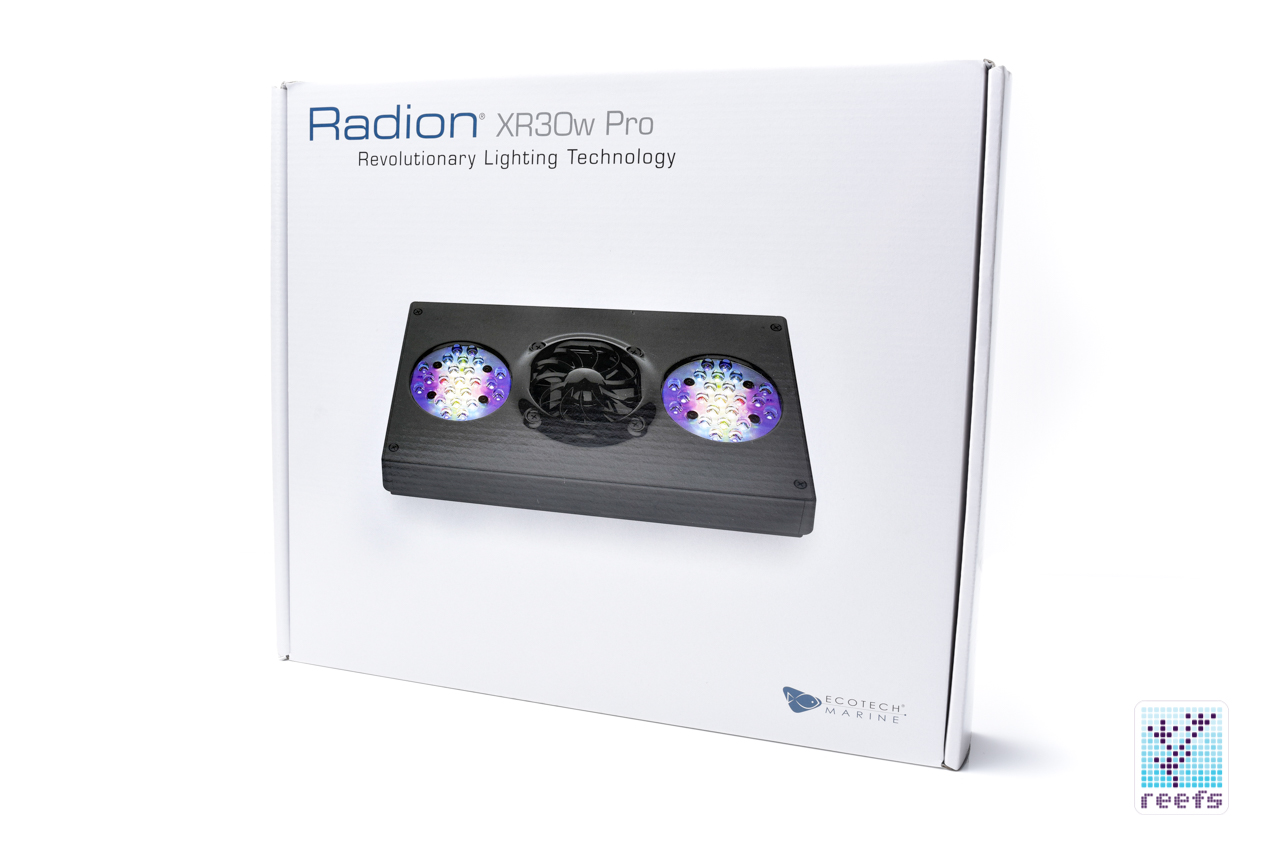
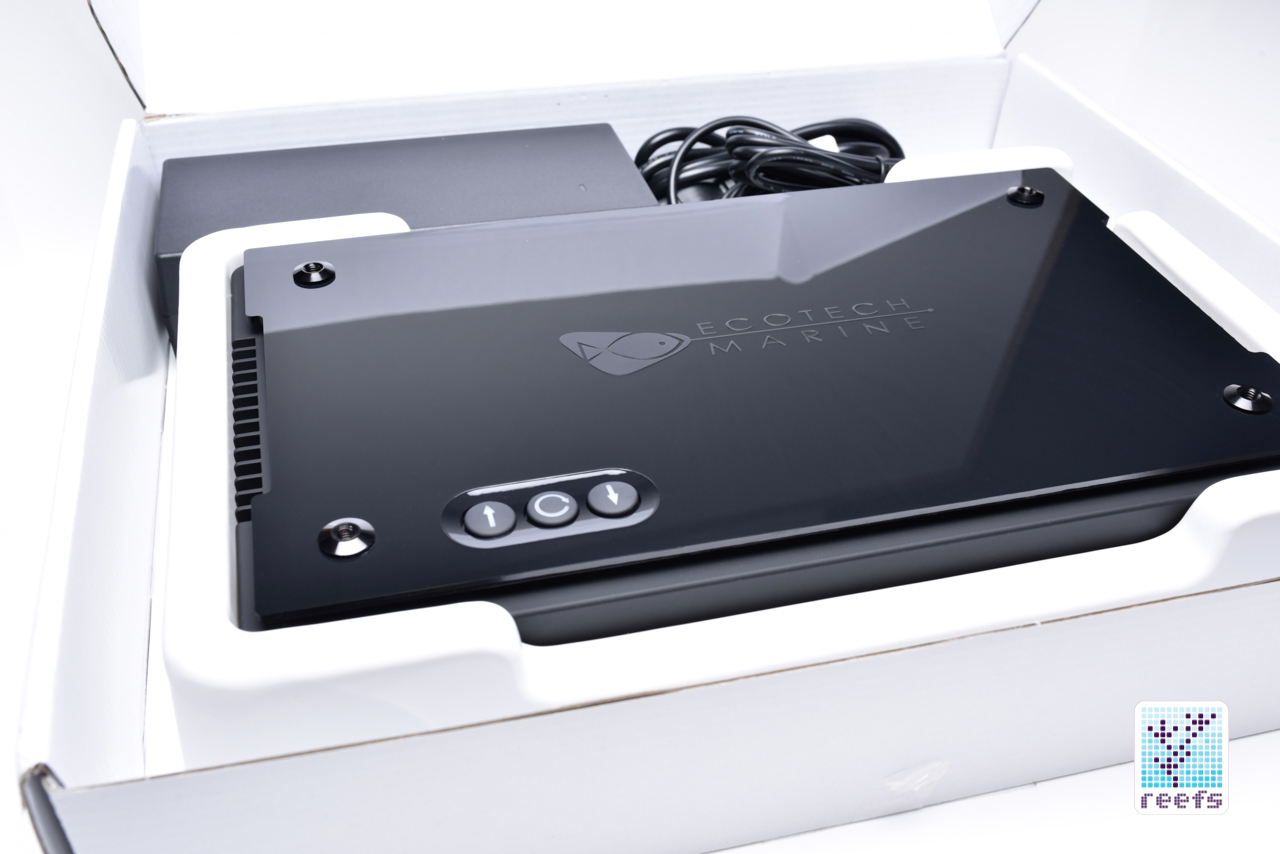
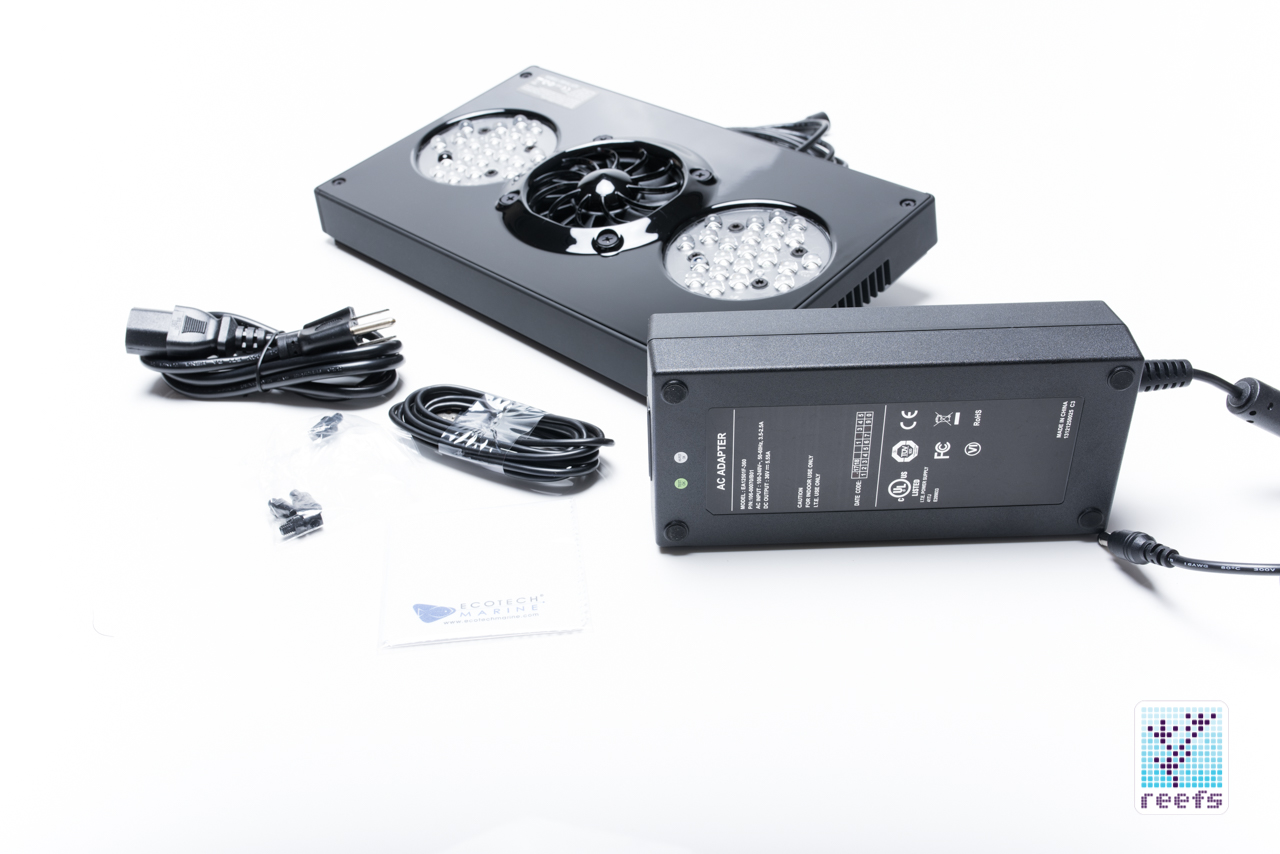
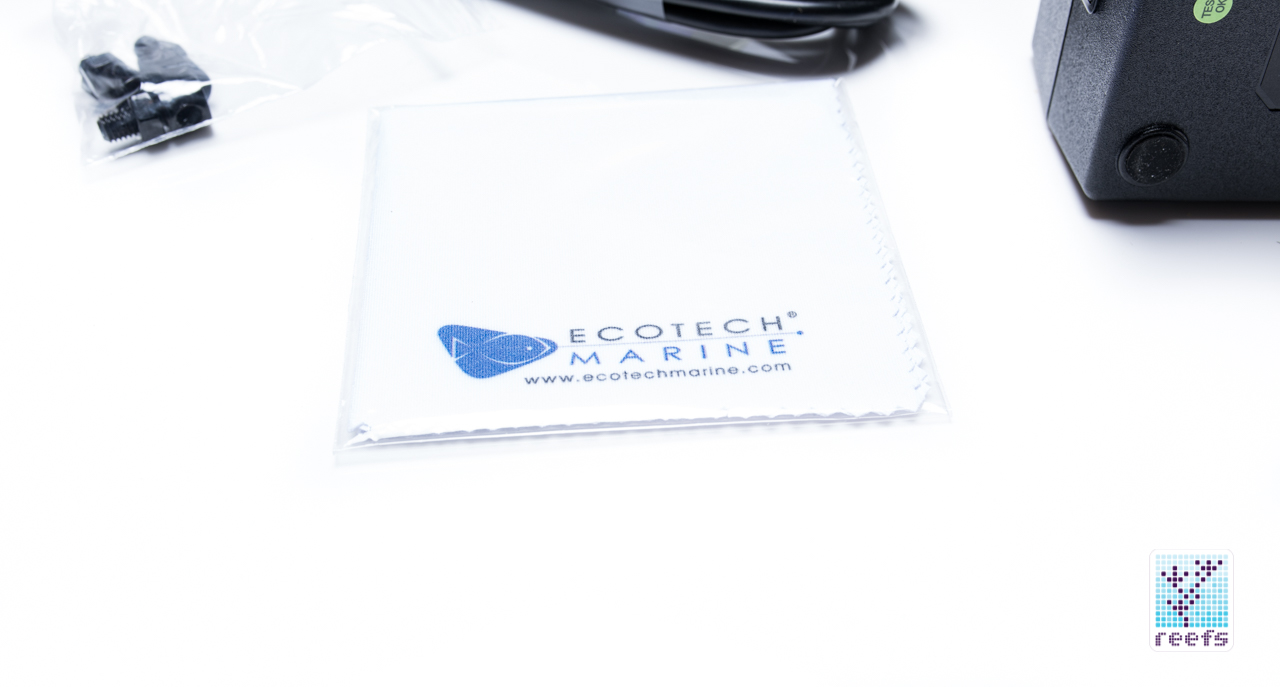
SETUP
The light fixture does not come with a complete hanging kit or tank mount, though you can use the supplied eyelets to assemble a DIY hanging rig with steel cables. Ecotech offers three different mounting hardware sets, both for individual LED panels and multiple-light configurations. The premium hanging kit consists of a finish quality steel cable, complete with preassembled loops with threaded caps that use Radion’s top plate sockets. There are also optional rail kits that help stabilize and straighten multiple lights.
For on-tank mounting, Ecotech designed a proprietary arm kit called RMS (radion Mounting System). There is one for single lights that attaches to the back of a tank, and one for multiple Radions. I purchased a RMS single to install on the back of my cube-shaped reef.
RMS
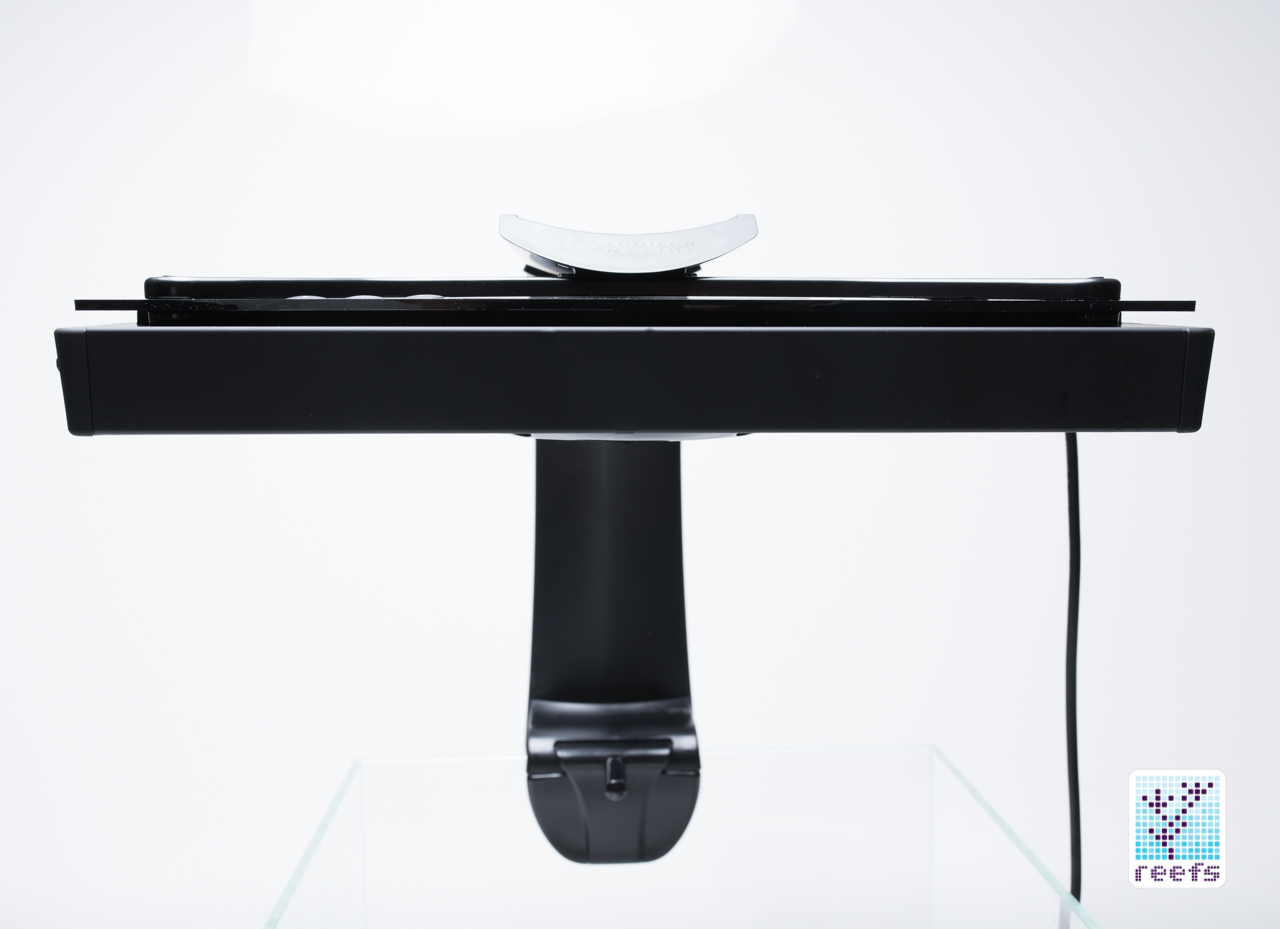
The RMS Tank Mount is nothing short of amazing. First, it’s rock solid- the arm is made of bent anodized aluminum, while the mount is a hard plastic (yet soft enough not to scratch the glass) complete with an oversized tightening screw and soft pads on the clamping jaws. Once assembled, it blends seamlessly with radion, sort of “flows” with the shape of the light; the goal of aquarium equipment manufacturers should always be to make a functional product that “disappears” in the aquarium décor (that’s why we don’t see many wave pumps made of bright red plastic). RMS excels in that category- it’s elegant, does not reflect light, and holds radion firmly.
Most of all, RMS is a very functional on-tank mount. It comes with three different length rails and an X shaped bracket that attaches to Radion’s 4 threaded sockets on the light’s top plate. The X-bracket can be rotated 90 degrees in each direction, which helps in creating an even light spread in wide (front to back) aquariums. The pivot mechanism has a noticeable feedback to it and there are several angle positions to which it locks in place, preventing the light from spinning freely in case you bump into it.
RMS can be mounted on both rimmed and rimless tanks; it has a pair of padded locking jaws that open enough to catch even the widest rims. When mounted, the bottom of radion sits approximately 6” from the tank’s rim.

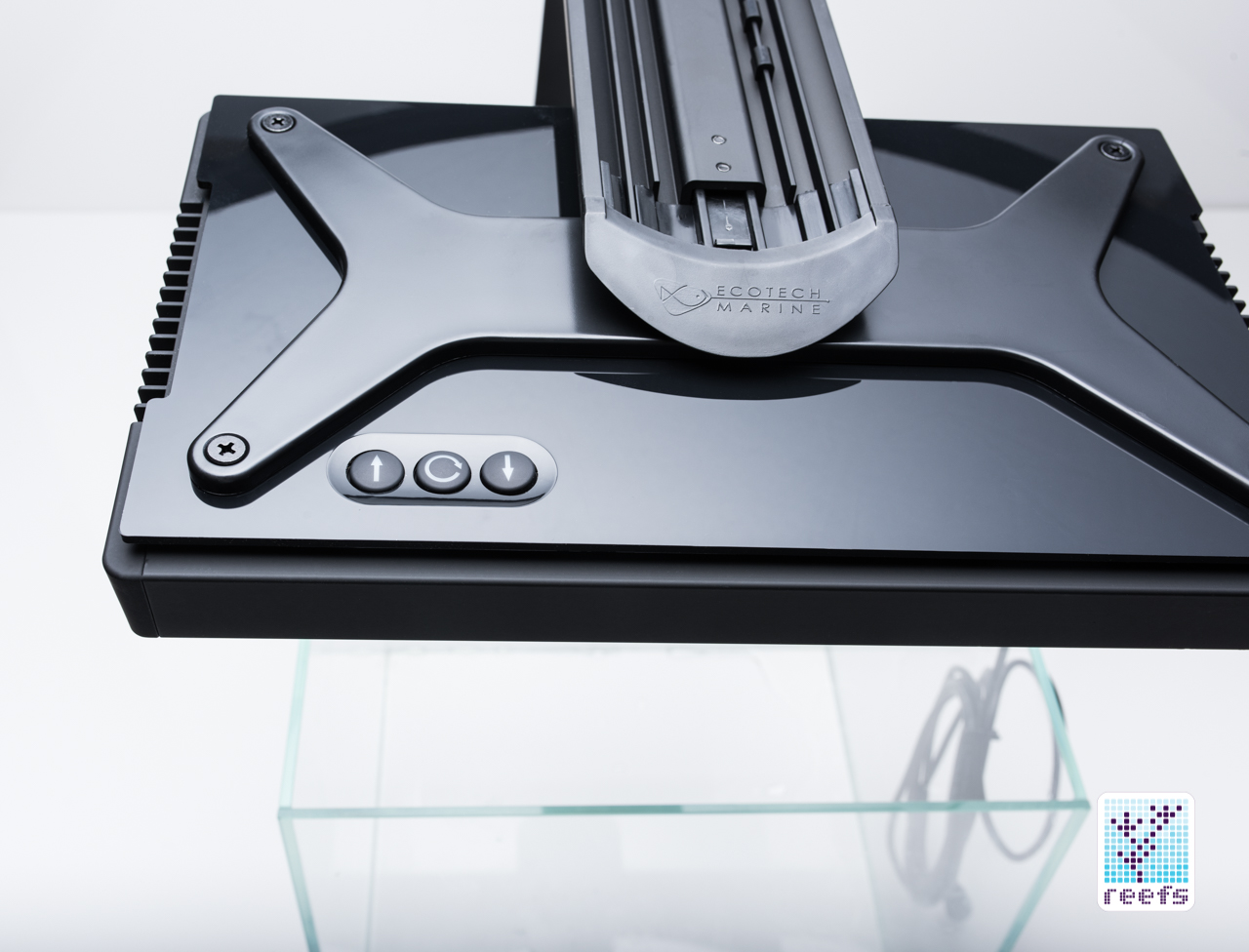
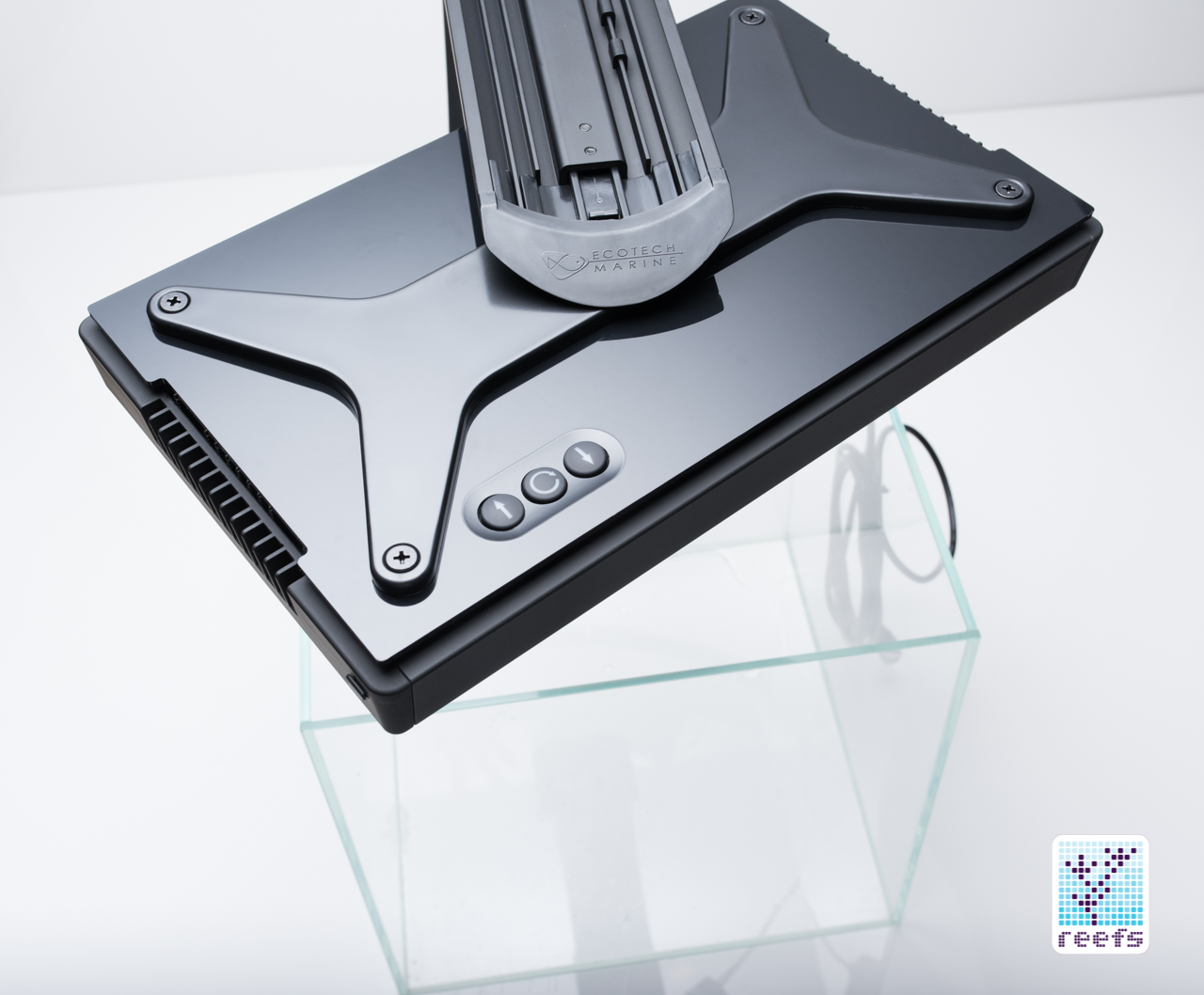
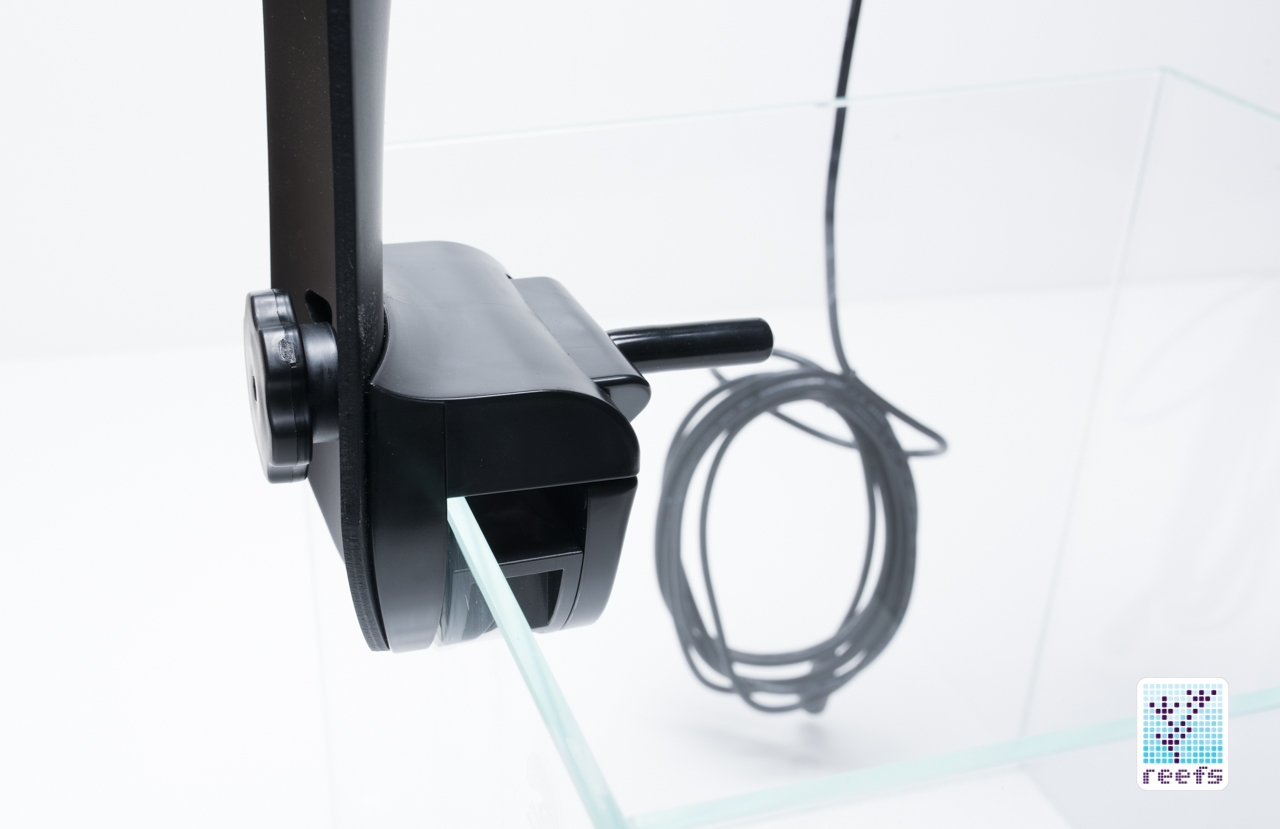
LIGHTS ON!

If you were planning to use the Ecotech radion without programming it first, I have bad news for you- the Gen4, just like previous iterations, is very limited when it comes to “offline” functionality. There are three physical buttons on top of the light, one for changing modes and two for dimming. Switching through modes and changing brightness is a breeze, but none of the pre-programmed configurations got me excited- there are few different Kelvin settings for daylight use and a “moonlight” setting. Radion’s true potential lays in its programming platform, but anyone looking for a “plug & play” experience may be disappointed.
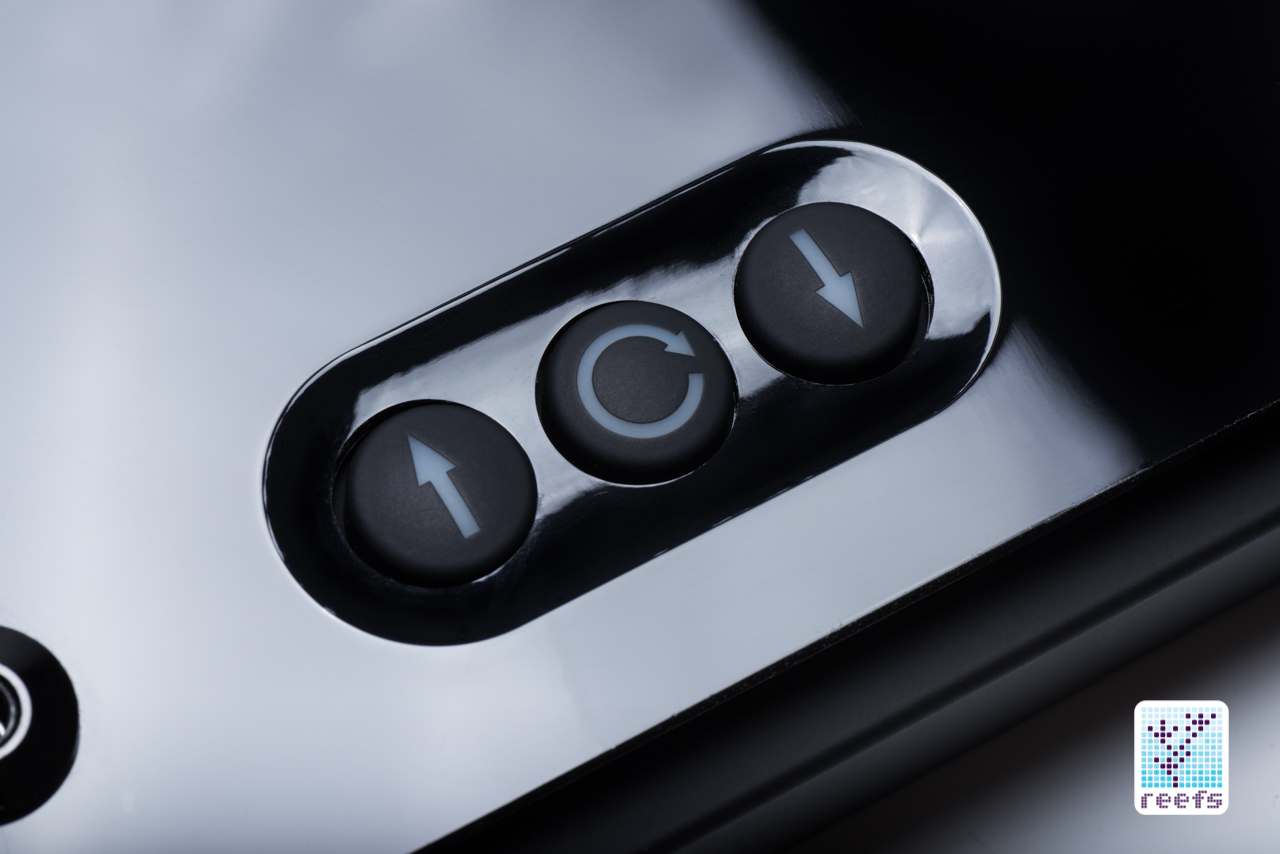
That brings us to EcoSmart Live, Ecotech’s web-based programming platform, with dedicated apps for Android and Apple phones.
ECOSMART LIVE
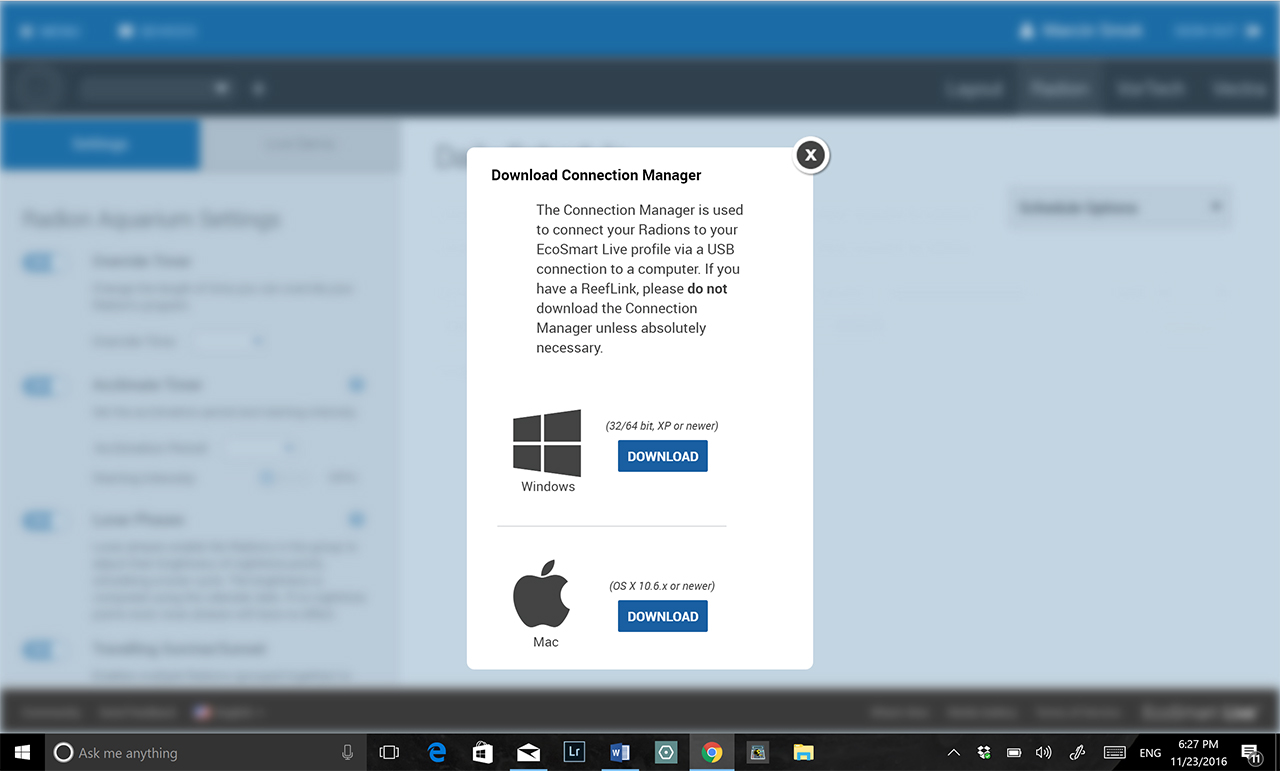
Connecting radion Gen 4 to a computer device is the only practical way of tweaking the light spectrum and intensity; buying any Ecotech LED light with no intention of using its programming platform would be a waste of money. Launched in October 2012, Ecosmart Live is Radion’s in-house interface, accessed via a web browser and/or dedicated Android & IPhone app. It allows users to program and sync radion lights, as well as control the Ecotech Vectra and Vortech pump lines. Ecosmart Live is a cloud-based service, meaning that all programming and scheduling changes a user makes is stored in the company’s server and can be edited from wherever there’s an internet connection.
To use Ecosmart Live, each new radion needs to be registered and added to the user’s profile. This can be done wirelessly or by tethering the light with a PC or Mac computer using the supplied USB cable. Wireless connectivity is only available, like in previous iterations of radion, with the purchase of Ecotech’s wireless dongle called Reeflink. At a $100 price point, Reeflink is a noticeable extra cost on top of the light’s already high price tag. It’s funny that only a few years ago, a lack of built-in wifi module in an aquarium light would not be a huge issue, but in 2016, a lot of competitors offer native wireless connectivity in their LED panels, and in that, Ecotech is lagging. Fortunately, a LED light is, in most cases, a “set and forget” piece of aquarium equipment, nevertheless, there are times where you want to easily override the scheduled program to watch the tank in different light spectrum. I’m a good example of someone who would benefit from wireless control, as I practice my macro coral photography and need a total control of the light to achieve satisfactory results. Not a deal-breaking inconvenience, but all my other lights, including a DIY LED panel I use over my freshwater planted tank, have wireless control.
Another option to connect with radion wirelessly is Neptune Systems’ WXM module, an Apex Aquacontroller peripheral. With it, the apex programming platform “Fusion” can be used to tweak Radion’s light output. From what I’ve seen in other aquarists’ videos online, the interface is similar to Ecosmart Live and switching from one to the other should not be difficult. The WXM module, sold for $124.95, is slightly more expensive than Reeflink, plus you need to have an apex controller to hook it up to.
I don’t own either Reeflink or a WXM module for my apex, so my experience is based solely on a wired connection using a Windows-based laptop and Google Chrome browser.
PROGRAMMING RADION
Whether you control radion using Reeflink or not, the initial procedure of registering a new radion with Ecosmart Live is very similar. First, you need to download EcoSmart Live Connection Manager (or Reeflink Setup for Reeflink users) to your device of choice, run the program and create an account with Ecosmart Live. When that’s done, the app will prompt you to connect the light via USB cable (a mini USB port protected by a rubber cover is located on the front left corner of the light). EcosmartLive registers a new fixture, assigns it to a new spot in your list of Ecotech Devices and sends you to www.ecosmartlive.com, from where Radion is now ready to program. At this point, Reeflink users can choose to establish a wireless connection with their light(s), while anyone who opted for wired tether will use Live Connection Manager to program their lights. The latter is an intuitive software running in the back while your computer is on and it “wakes up” automatically when you plug in a radion light. The entire procedure takes only few minutes and is very easy to follow, plus Ecotech offers a series of instructional videos explaining how to set up Radion on their YouTube profile.
The EcoSmart Live home screen has a well-designed and clean-looking interface that serves as an all-in-one command center for all Ecotech devices. There are separate tabs for radion, Vectra and Vortech, as well as a few other options to help organize one’s connected aquarium. The menu in the top left corner takes you to personal options, account settings, and other general settings. The dashboard consists of a large daily schedule graph, where you can see how the light spectrum and intensity is redistributed throughout the photoperiod, as well as a myriad of different sliders, activating various effects and program overrides.

From the top (in the Settings menu), we have:
– Override Timer- this option allows for temporary overriding the programmed schedule using preset cycle button on the radion; user defines override time and after it elapses, radion goes back to the scheduled program
– Acclimate Timer- very useful option that allows corals to adapt to the new light source when switching to Radion- user can set up starting intensity and acclimation time, during which the light intensity will increase gradually until it hit target intensity at the end of acclimation period
-Lunar Phases- Ecotech version of the moonlight effect where the light is programmed to follow real-life lunar phases, dimming the night light output accordingly
-Traveling Sunset/Sunrise- another cool option, albeit available only for tanks with more than 1 Radion- light output fades from one side of the tank to the other at sunset/sunrise hours
A intensity/timeline graph labeled “Daily schedule” takes up the main part of the dashboard; this is where you program the light. A manual programming mode is very easy to follow- you can either change the intensity of all channels using a global slider and set the light temperature with a second one or, alternatively, tweak each color channel independently. You can add points to the timeline graph and adjust the output to your liking. Beside manual scheduling, Ecotech offers a couple presets for different types of aquariums. There are 6 main templates to choose from, each designed with a different type of aquaria (and aquarist) in mind. Without going into too much detail, these presets focus on various aspects of aquarium lighting, its intensity, spectrum and sunset/sunrise emulation.
Since the January 2016 Ecosmart Live update, a new series of templates, called Coral Lab, has been added to the program. However, the Coral Lab project is much more than a simple collection of random lighting schedules. Instead, the set, which currently consists of three individual sub-templates, is a result of extensive research in coral husbandry using LED lighting. Ecotech partnered with Canadian coral distributor Reef Wholesale to develop an optimal lighting schedule for acclimating corals in their aquaculture facility using radion Gen 3 Pro lights. Reef Wholesale adopted LED lighting with a specific goal in mind: to maximize coral growth and coloration while reducing operational costs. To test this new [to them] type of lighting, they ran a yearlong experiment where Radions were compared to their existing lighting – half of the grow out beds were lit with Ecotech lights and half with another light source: T5 fluorescent panels with ATI brand bulbs, as well as metal halide pendants with Phoenix 14k 250W bulbs. During the course of the year, coral coloration and growth was monitored daily and adjustments to G3 radion spectral output and photoperiod were made.
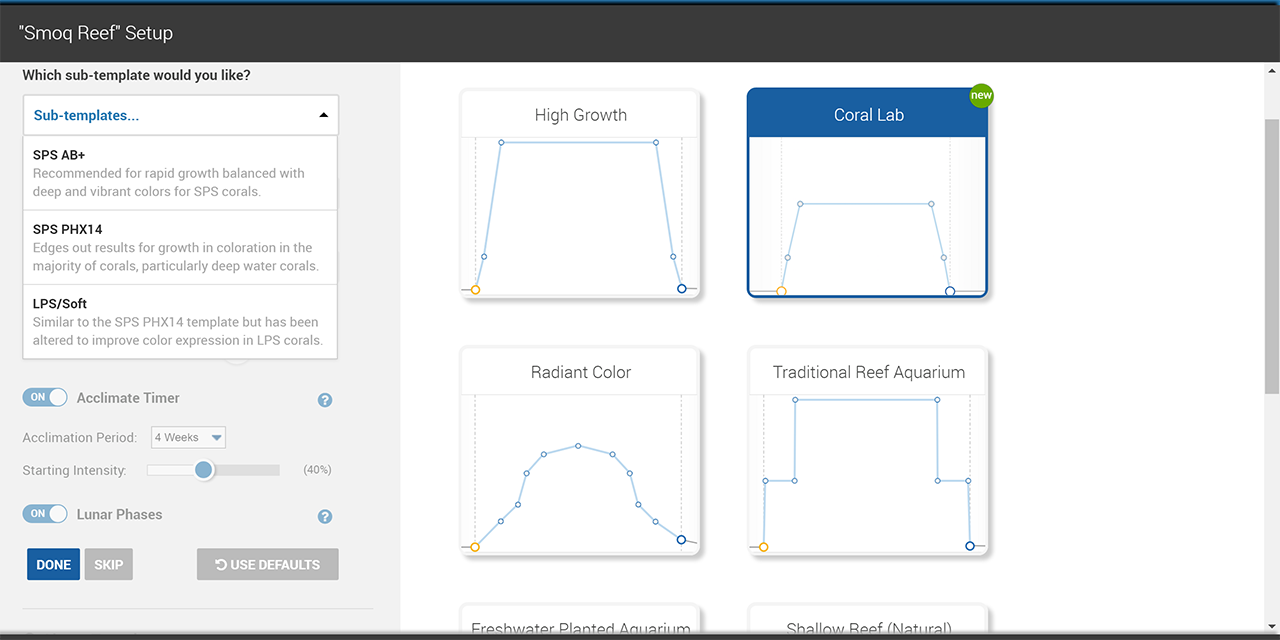
The outcome of this long-term study was presented in a 15-page report titled “A case study in exceptional reefkeeping using LED lights”. I encourage everyone to check it out (click on the name of the study for a pdf file), it’s a fantastic read that explains the methodology behind the study and the outcomes after using radion to grow corals in a commercial-scale operation. What’s in it for Ecotech customers? The study led to the design of the previously mentioned lighting program, the Coral Lab. Available through the Ecosmart Live platform, the program has three schedules:
- SPS AB+- a 7-hour photoperiod aimed to enhance coloration and induce rapid growth of SPS corals; the light output closely resembles that of reef-specific fluorescent lighting
- SPS PHX14- as the name suggests, this profile was developed to mimic the spectral output of a Phoenix 14k metal halide bulb, and therefore is an optimal choice for reefers switching from this type of lighting; the RW & Ecotech study concluded that some types of SPS corals may fare better under the spectrum provided by that profile
- LPS/Soft- lighting schedule developed specially to enhance color and growth of LPS and soft corals
Even though the Coral Lab settings were developed using G3 Radions, the lighting profiles can be used with success with Generation 4 LED clusters. Soon after the January 2016 Ecosmart Live update, the new profiles gained popularity amongst radion users, and are currently the preferred method of utilizing the light’s output. Each profile can be modified and/or extended to an individual hobbyist’s needs, just like with any other preprogrammed lighting schedule Ecotech has in its library.
PART III
REEFING WITH G4 RADION
I played with the Generation 4 Ecotech radion Pro XR30W for over 3 months before writing this review. During that time, I tested and tweaked different lighting profiles, spent some time familiarizing myself with Ecosmart Live and settled on the profile that produced the best results for my reef tank (a modified Coral Lab SPS AB+). I also visited some of my fellow reefers and LFS owners that are using Ecotech lights, seen Gen 3 Pro alongside previous generation Radions, talked to them about their experiences keeping corals under LED lighting and through all that experience, was left with an informed opinion of the latest generation of Ecotech radion Pro. Below are the results of that evaluation:
PERSONAL EXPERIENCE
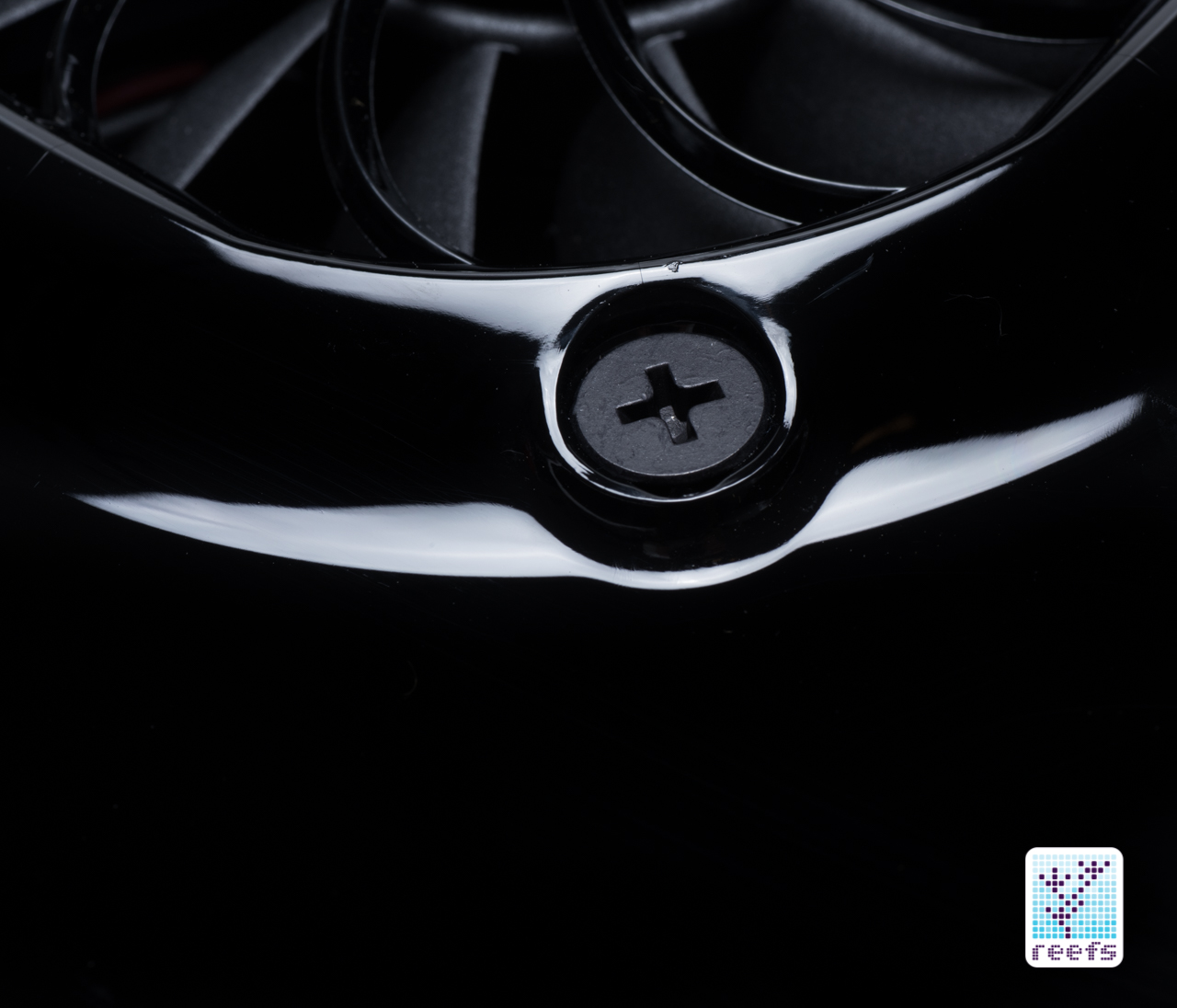
Throughout the years of being in the hobby, my home aquarium has been lit with a myriad of LED lights, and every time I upgraded, the outcome satisfied both my aesthetics, as well as my tank’s inhabitants’ needs. That being said, no single light has made such a significant impact on my reef as the Gen4 Ecotech radion Pro does. On the outside, it simply looks beautiful, to the point where it even gets attention from my non-aquarist friends. To them, the light appears “sleek”, “futuristic”, and “expensive looking”. radion is and always has been a head turner, and the new radiator and fan grill derived from Gen 3 only add to the already great visuals. Physical buttons on top of the light, identical to the ones found in Gen 3, are responsive and clearly a better choice than the touch buttons used in previous generations.
From a functionality perspective, Gen4 radion also lives up to my expectations. Not only is Gen4 XR30W the most powerful light in Ecotech’s catalog, at 190W of power, it’s also one of the highest PAR rated fixtures in its class. I personally am not a big believer in the “more is better” philosophy when it comes to PAR output, as I’ve seen enough SPS corals, mainly from the stylophora, pocillopora, and montipora genera, thriving and looking healthier under mid-range PAR values. Instead, I wanted to check how PAR distribution is affected with the newly developed HEI lenses all G4 Radions feature. Using neptune Systems PMK sensor, I checked PAR values at the same distance from the light source but in different spots from the center of the light.
http://s196.photobucket.com/user/smoq_asylum/media/spectral%20graph.jpg.html
Details:
Ecotech radion G4 XR30w Pro @ 70% intensity using modified SPS AB+ profile
The PAR distribution of the G4 radion Pro is excellent. My little experiment proved that the farther from the light I placed the PAR sensor, the more uniform the light spread was. Please note that there might be some disproportions in the results due to the fact that my reef tank is fully grown, and placing the sensor in the exact same spot on both sides of the tank was sometimes impossible.
Nothing says more about the quality of a light than the effects of its output on the growth and coloration of corals. I can only provide anecdotal evidence with my 3 month experience running Gen4 radion, but I’ve had nothing short of amazing results switching from my previous combo of LEDs. The growth increased only slightly (I ran the acclimation program for the first month that I had the light, starting from 40% intensity), but the coloration and polyp extension improved significantly. I’ve witnessed zoanthid polyps fully opened and looking great in places overshadowed with SPS corals, which never happened before. The quality of the light output radion produces makes the color pop more than I’ve ever seen, and the lunar mode produces some mesmerizing fluorescence.
The centralized fan that cools the LED emitters, while not totally inaudible, does not emit significant noise and is only heard where you stand right in front of it. Ecotech managed to resolve the fan noise issue that people using previous versions of the light had complained about by redesigning the radiator.
COLLECTIVE DATA
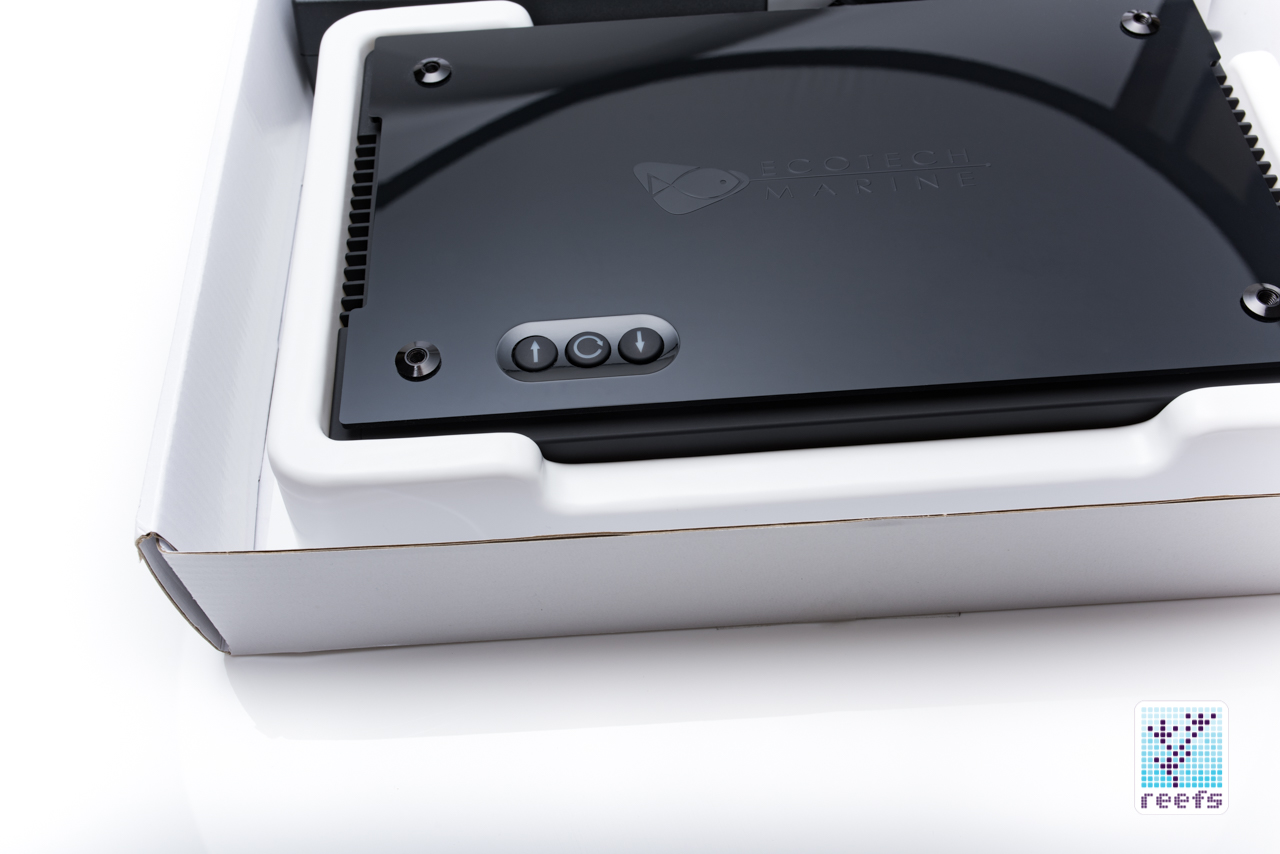
Every reef keeper I spoke to praised the Ecotech radion lights for its excellent coral color rendition and the uniformity of its light output. They are all high-profile aquarists that run successful reef tanks and I trust their opinion, especially after seeing their amazing setups and knowing how hard is to maintain a successful reef aquarium for a prolonged period of time. I had the pleasure to see Randy Donowitz’ 240g reef aquarium; he recently upgraded two of his six radion fixtures to Gen 4 Pros (the other 4 are Gen2 Pro lights with wide angle TIR lenses) and the first thing that struck me was how much brighter the Gen4 lights look to the human eye. All of Randy’s Radions are run on the same intensity, yet the light output generated by the Gen 2 LED clusters appears dimmer, with more visible “dead spots” compared to the light produced by the newest Ecotech Radions. To dramatize the difference between the two, I increased contrast in the full tank shot of Randy’s 240g reef tank below. No other adjustments were made to the photo.
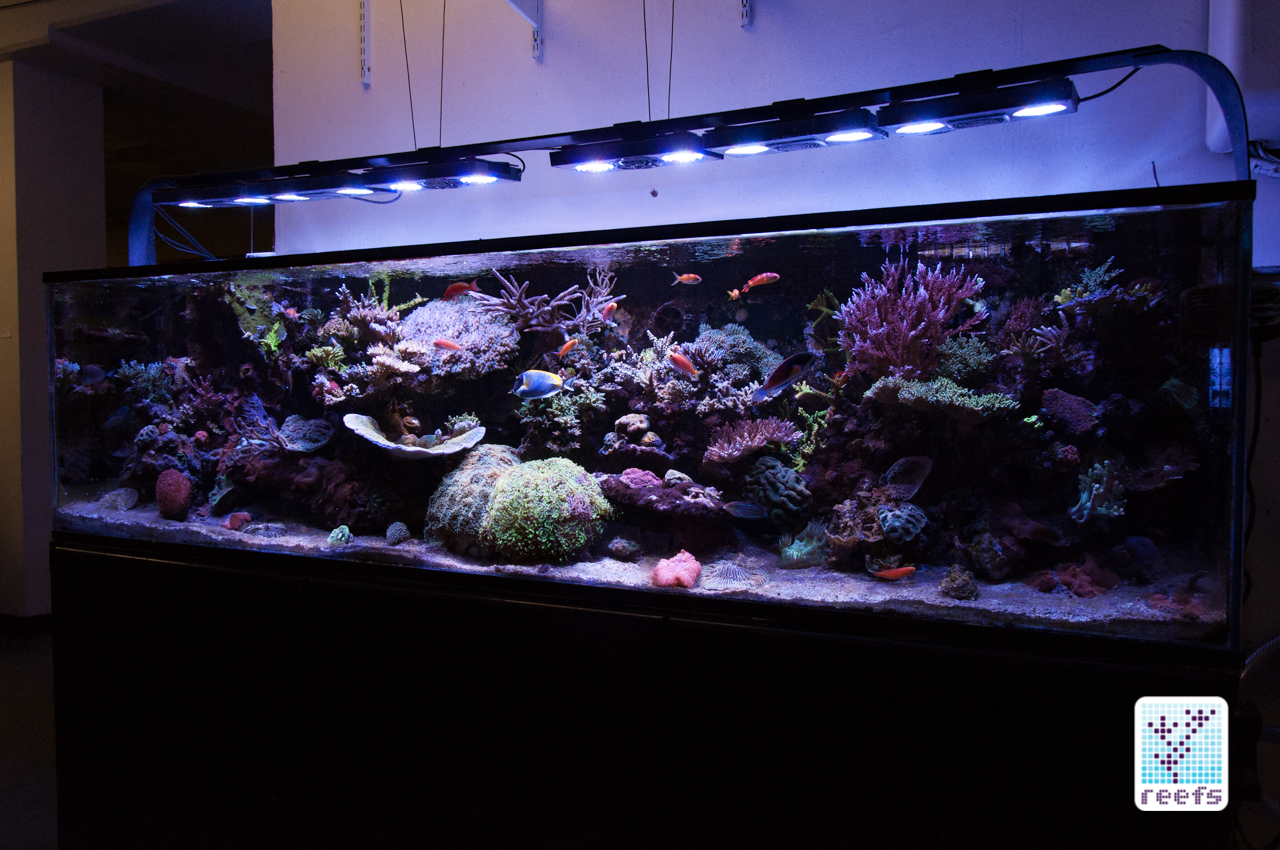
As you can guess, the Gen4 Radions are in the middle of the tank, bordered by two Gen2s on each side. Again, per the tank owner himself, both Gen 2s and Gen 4s are excellent in growing corals, but the difference in brightness between the two is quite striking, thanks to the addition of warm white emitters known for their perceptive brightness.
PART IV
CONCLUSIONS
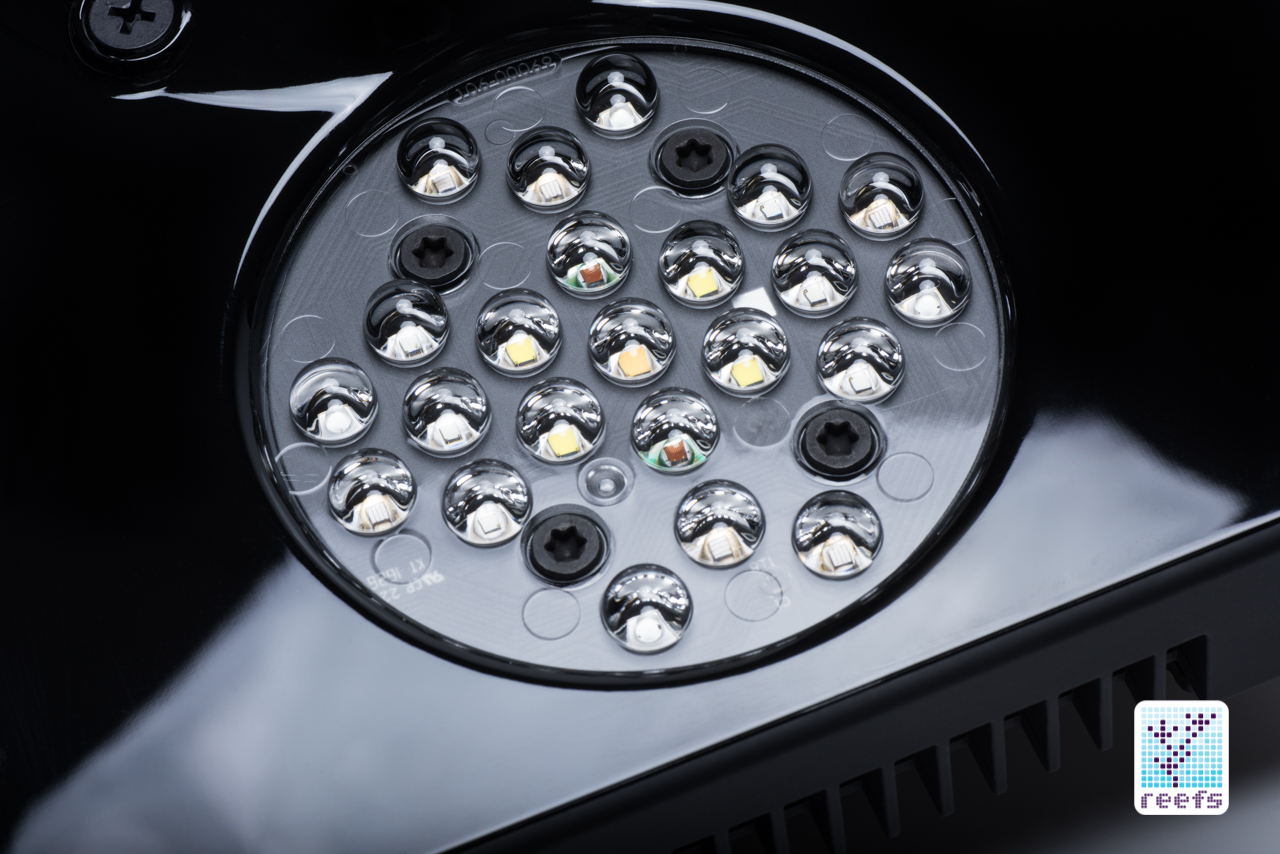
As you may have already deducted from the review above, I am a big fan of the Ecotech radion Gen 4 Pro light fixture. It delivers on all of its promises and, what matters to me the most, creates a visible difference in the appearance, growth, and health of my corals. The lunar mode LEDs produce some incredible fluorescence and the subtle shimmer effect makes my aquarium “dreamy” to look at.
Your results may differ, especially when moving from Gen3 radion, and in my opinion, it’s fine. Tim Marks himself even said that if you’re currently running G3 radion and having good results with it, there is no need to sell them and upgrade to Gen 4. While there is a visible difference in output when you put Gen 3 and Gen 4 side-by-side, both lights can grow corals with ease. What Gen 4 represents is the latest in aquarium LED lighting technology combined with years of experience on Ecotech’s part and if that’s what you’re looking for, the newest radion surely delivers on its promises. It’s still not perfect, but its pretty close. Even its high price tag ($799 for the XR30w Pro fixture, $649 for the non-pro XR30W and $399 for the XR15W Pro light) is justified by the fact that radion has created a class of its own, and its only competitors are lights that are often much more expensive. If I had to make a classic +/- chart, it would look like this:
Advantages:
- The best looking, highest PAR output, most powerful light in its price range
- Excellent PAR redistribution over a light spectrum most useful for reef dwelling photosynthetic animals
- Intuitive programming platform with excellent set of schedule programs and high level of customization
- Great OEM hanging options available
- Fantastic looking lunar mode that enhances coral fluorescence like no other light I’ve seen before
- The light stays only slightly warm to touch throughout a 10 hour photoperiod and the cooling fan operates with very low noise
- All corals in my mixed reef aquarium respond positively and look beautiful after 3 months of using radion Gen4 Pro light
Disadvantages:
- Lack of backwards compatibility breaks the Ecotech tradition of upgradeability
- No built in WIFI module
- Physical buttons on top of radion could be used in a different fashion than they are programmed
In summary, the Ecotech radion Gen4 XR30w Pro is a top-notch fixture, offering unparalleled specifications that translate to excellent results in growing corals, wrapped in a beautiful package made of high quality materials. The high price tag is justified by the light’s performance and the company’s excellent customer service, both which insure that radion keeps its value for years after purchase. If you have an arm and leg to sell, don’t hesitate to get the new radion – you won’t be disappointed.
USEFUL LINKS
“Coral Lab: A case study in exceptional reefkeeping using LED lights”
EcoTech Marine YouTube Channel
EcoTech Marine Facebook Profile

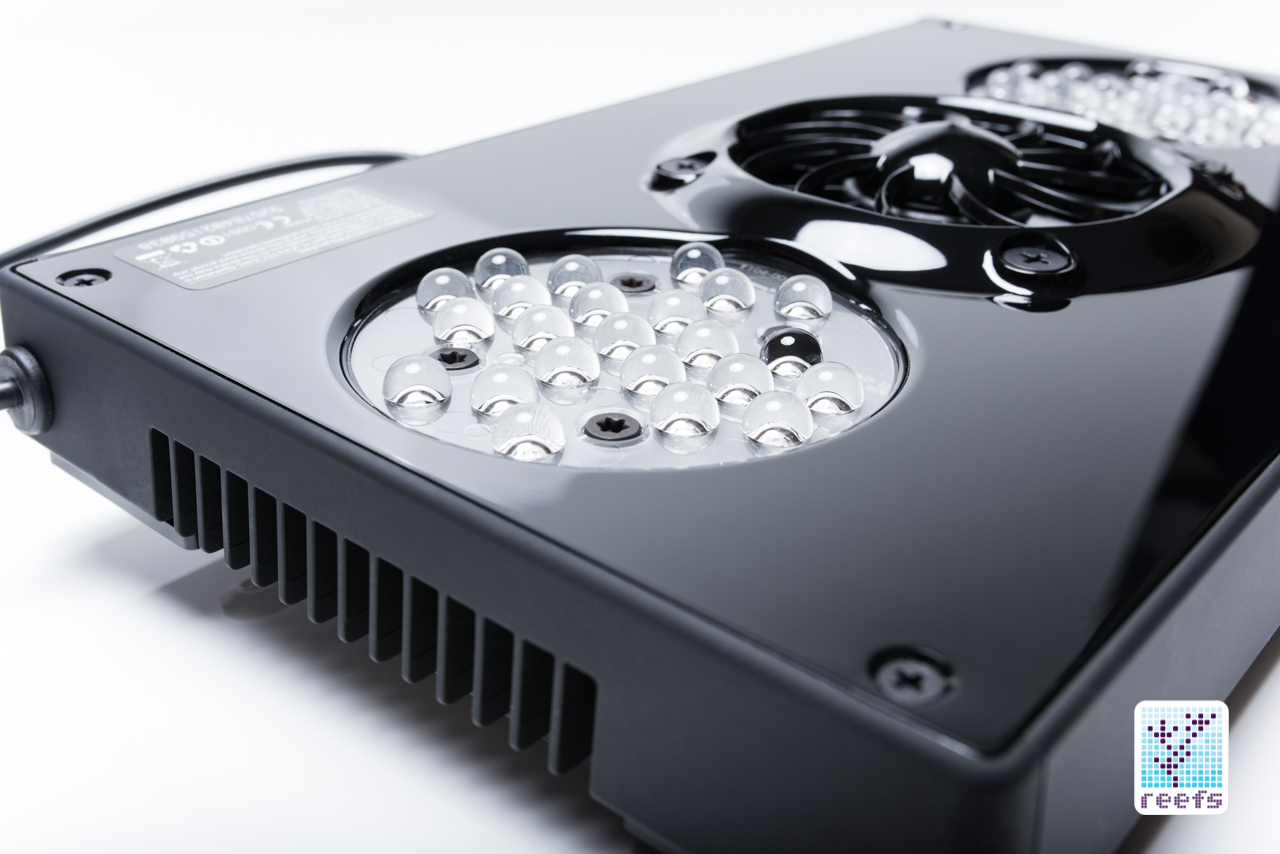
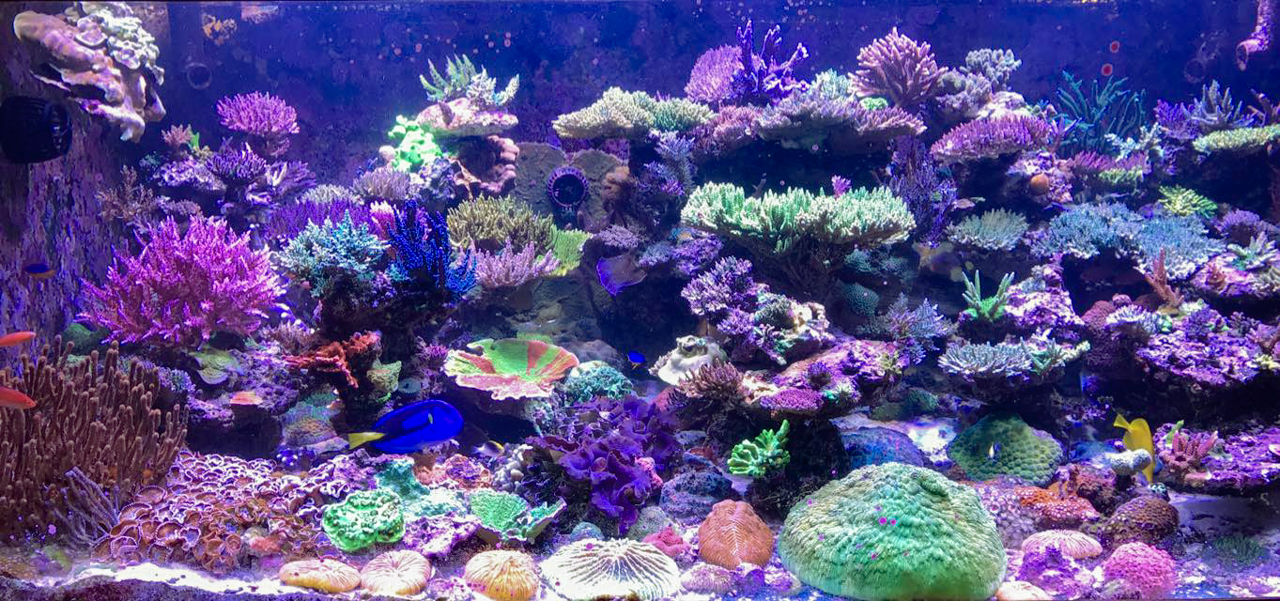
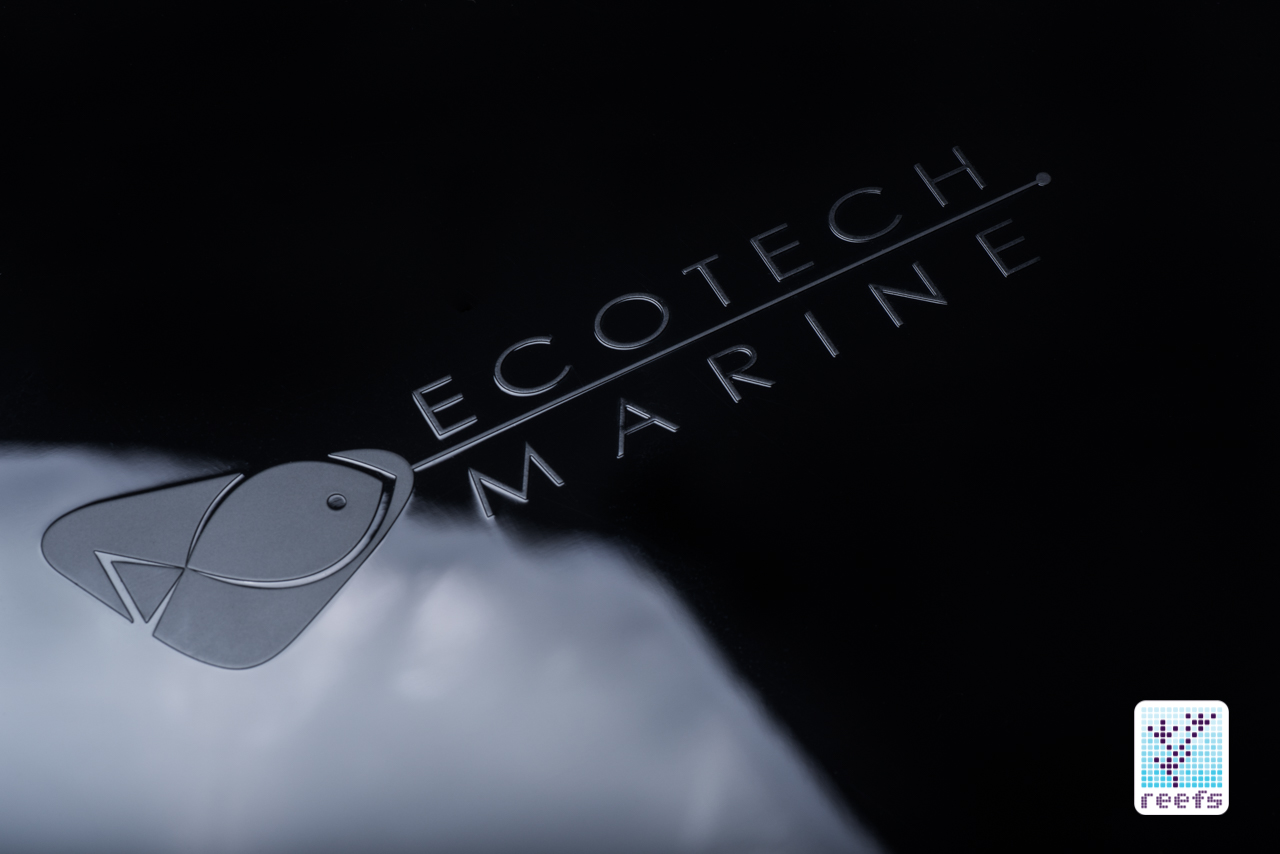
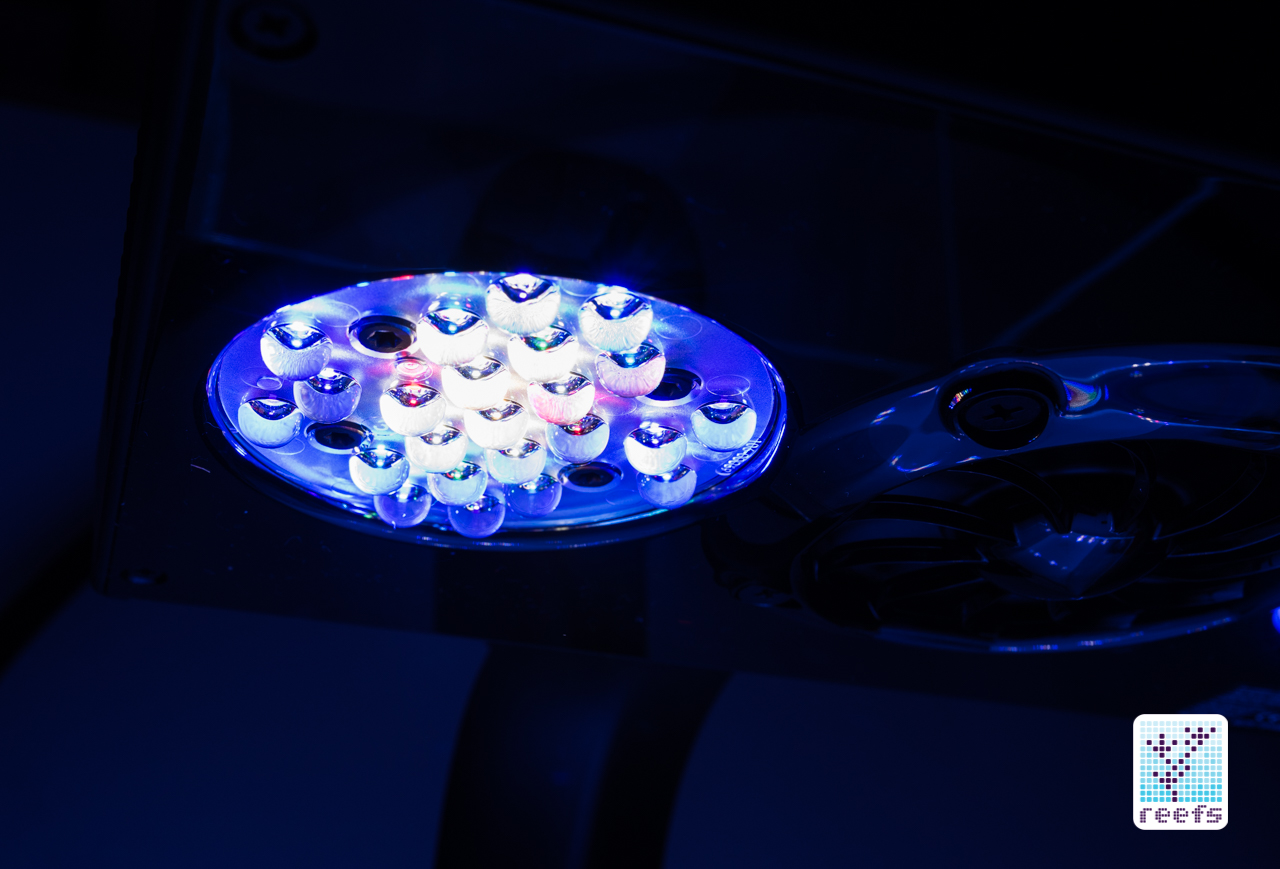
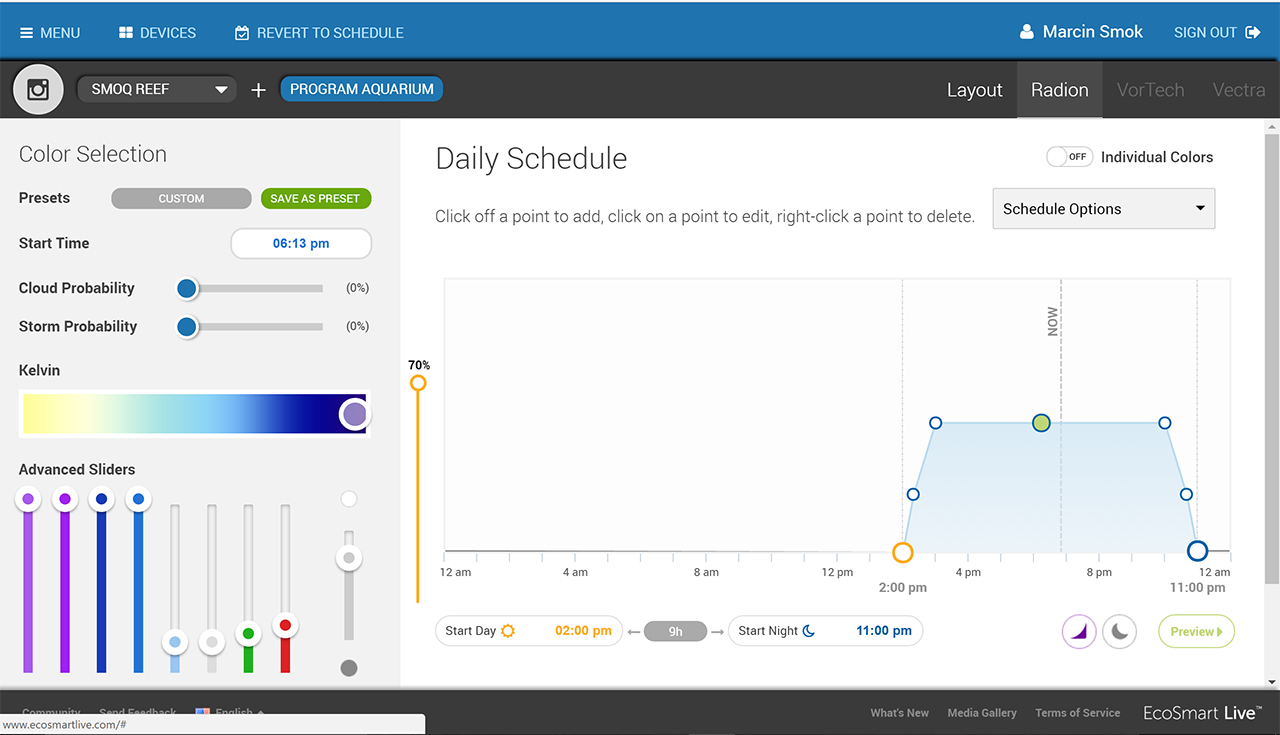
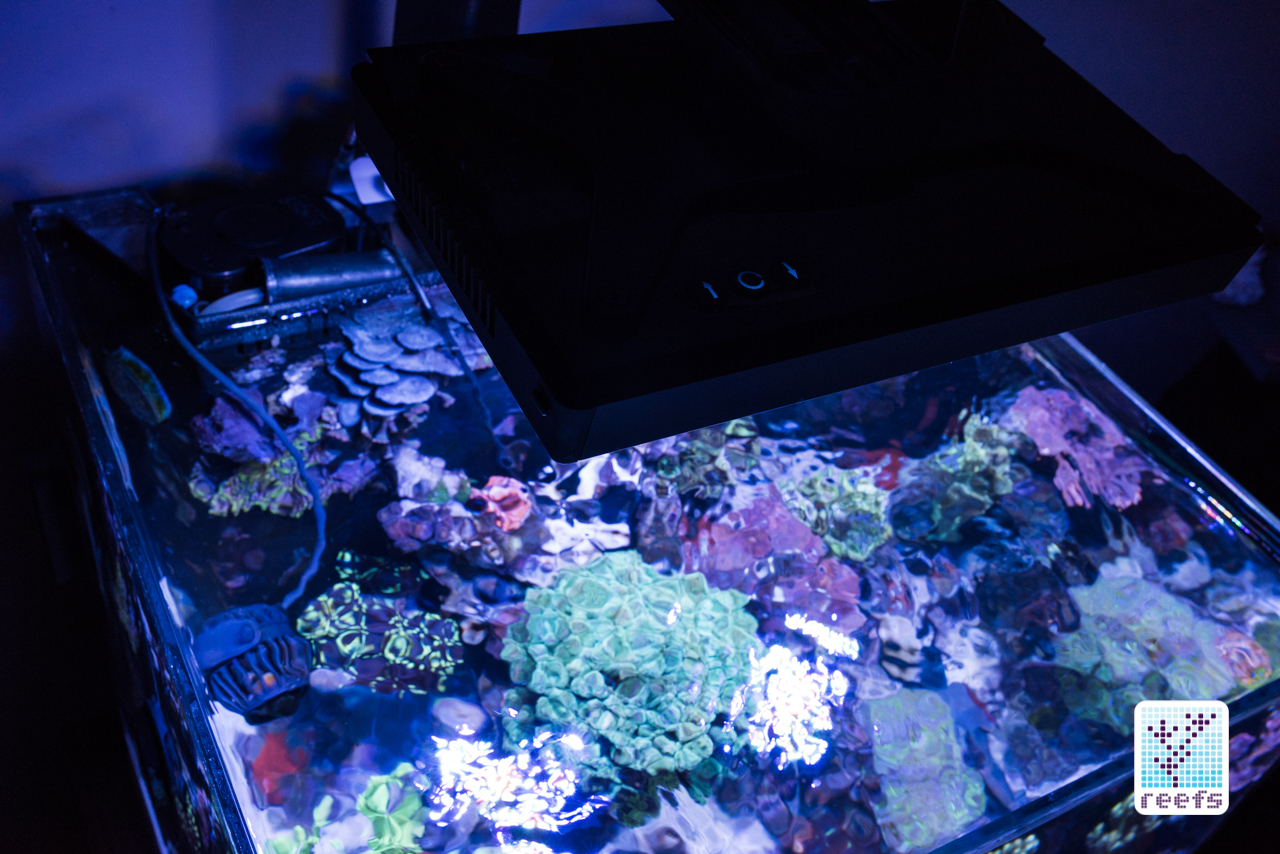
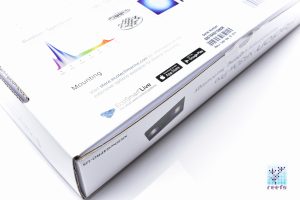
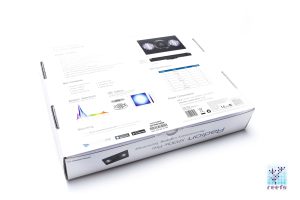
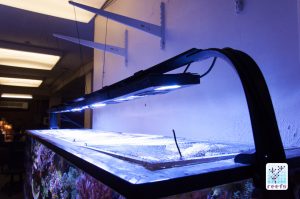
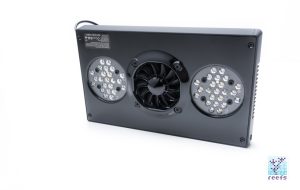

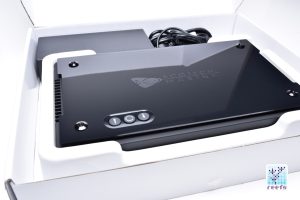
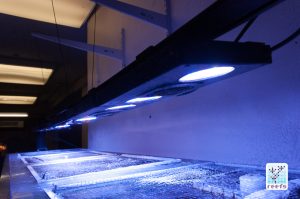
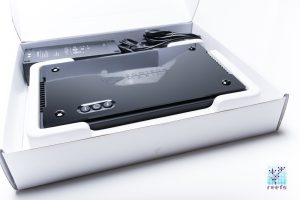

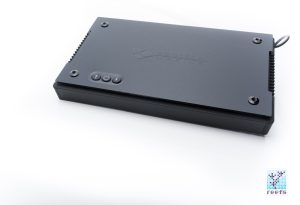

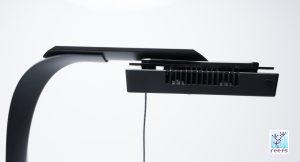
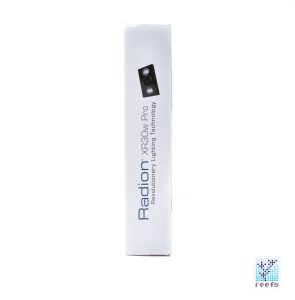
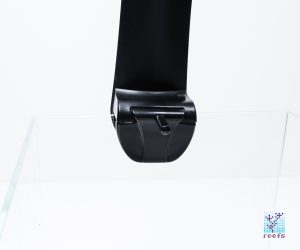
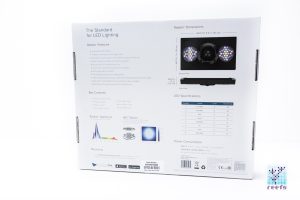

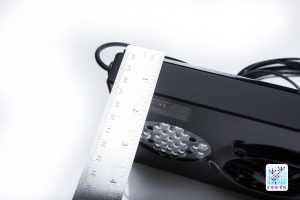
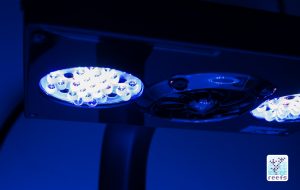
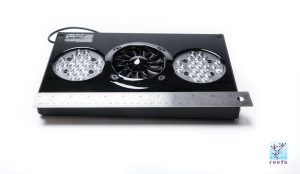
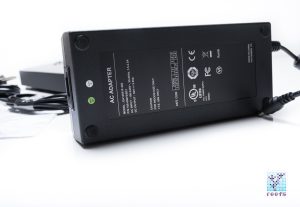








0 Comments